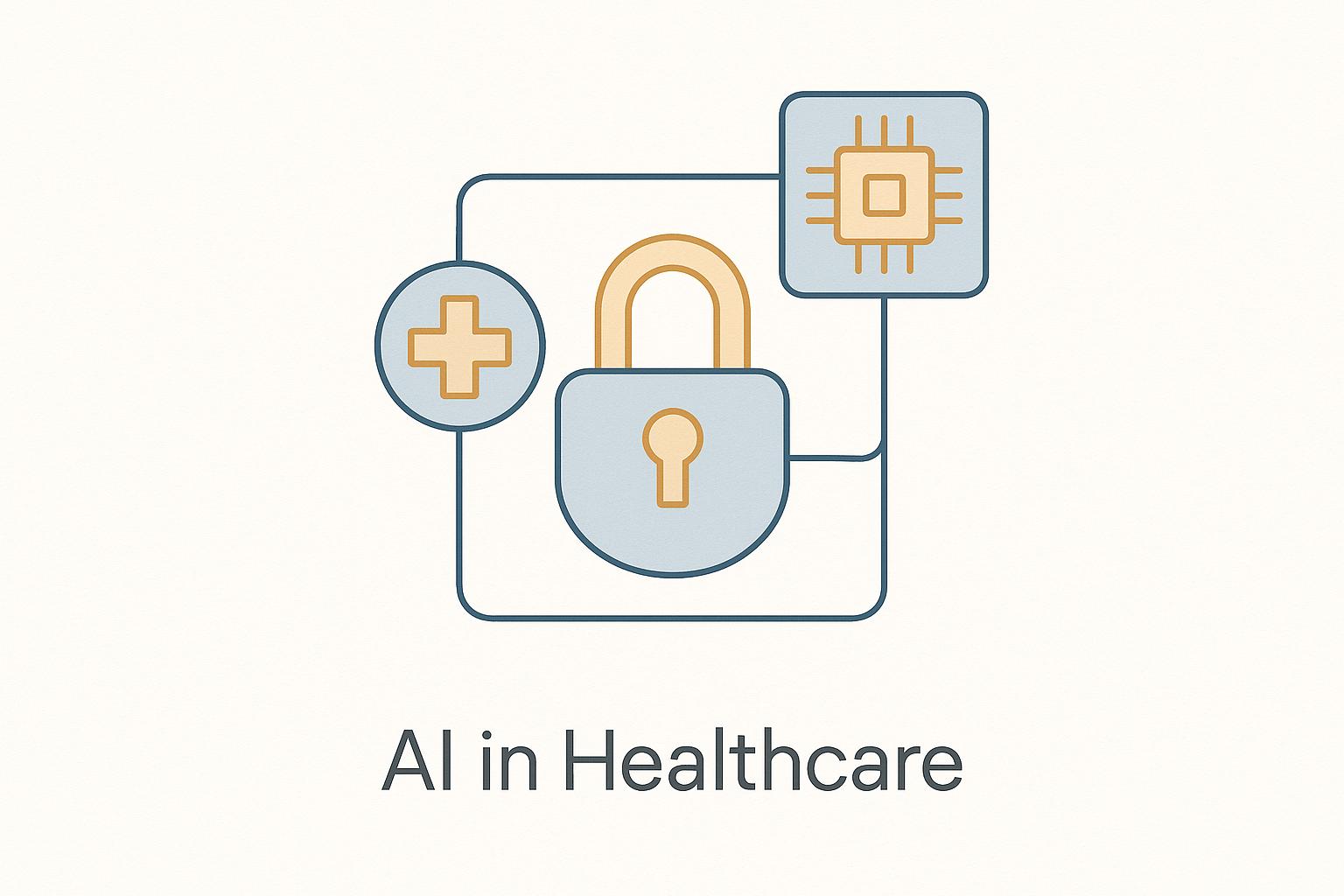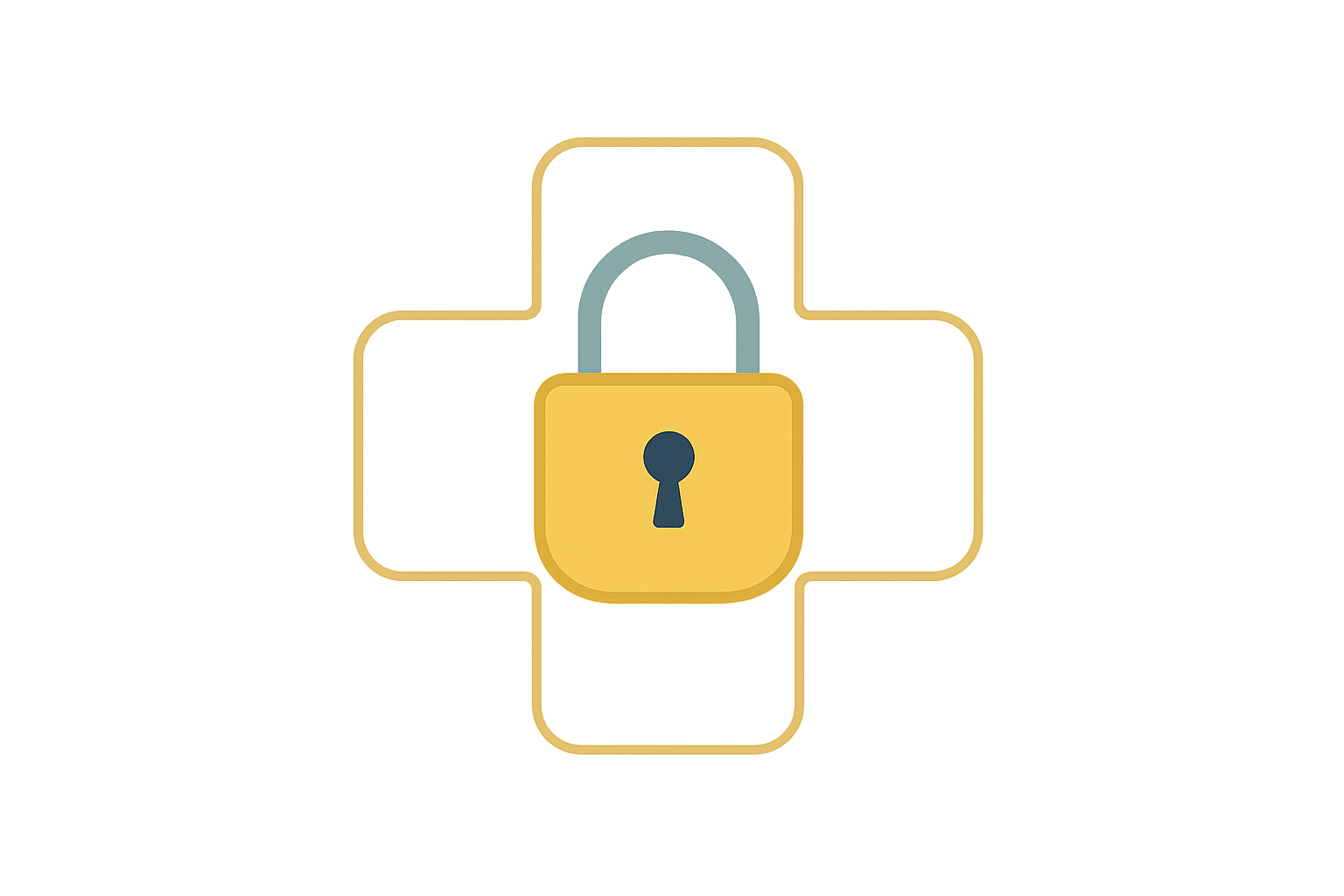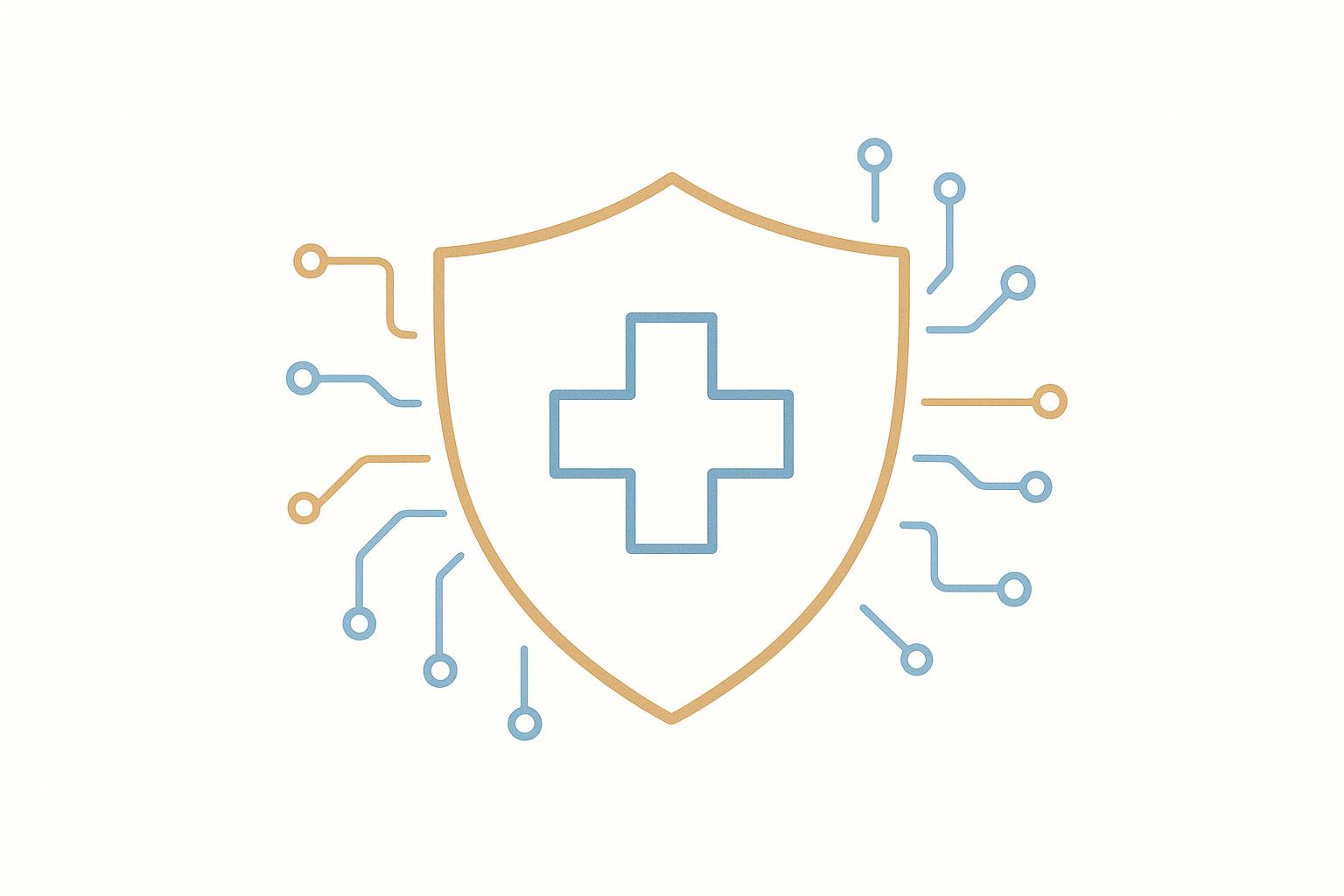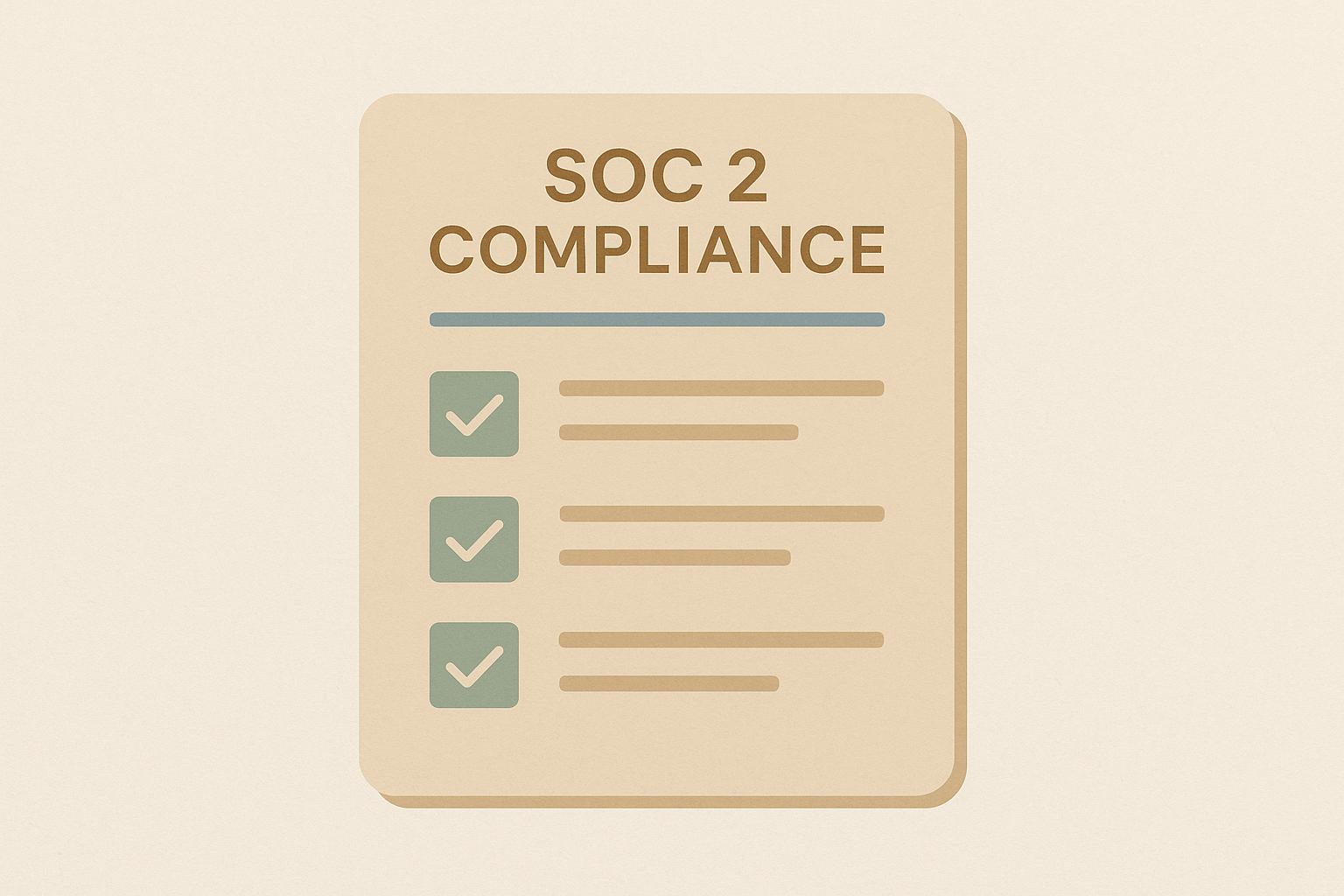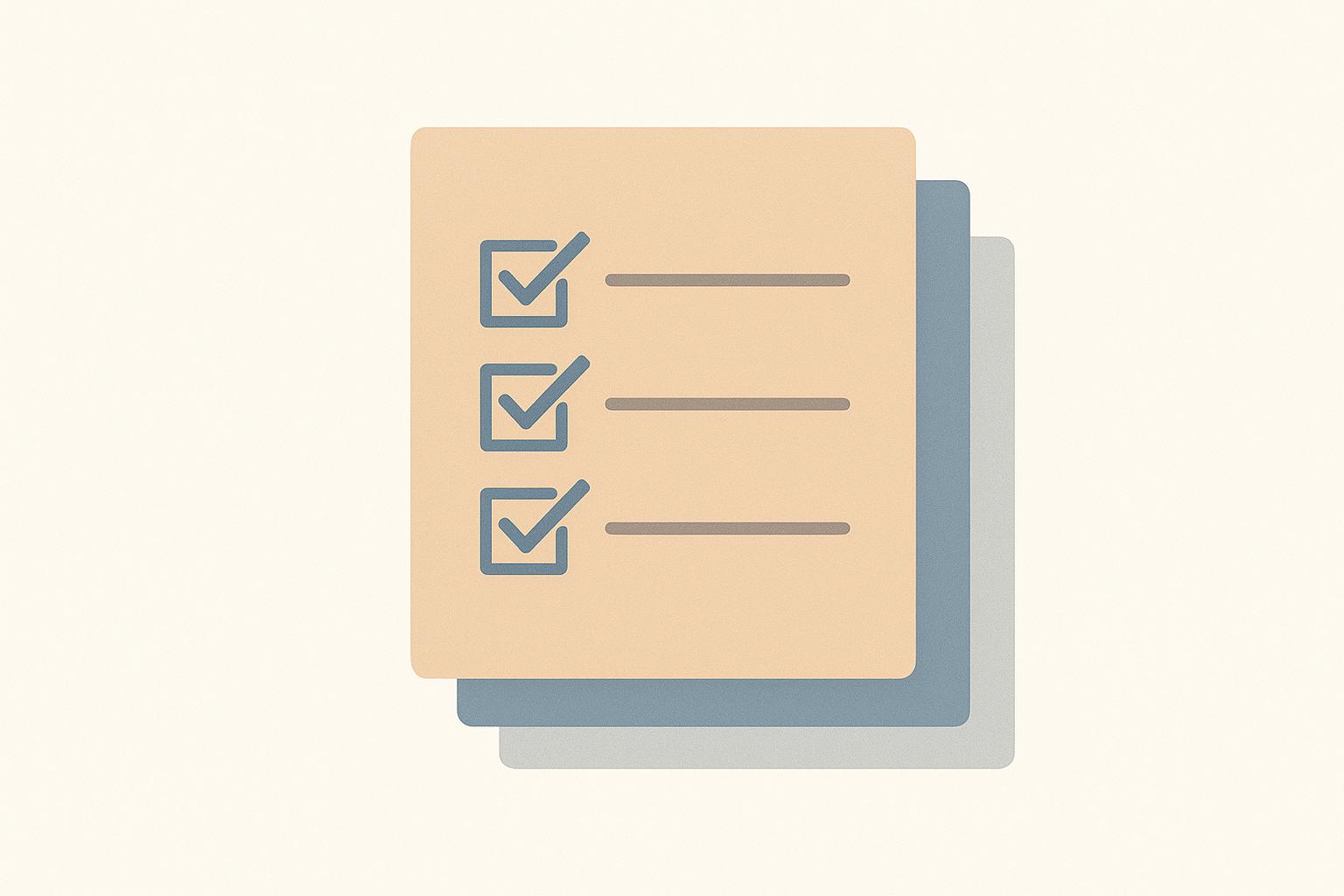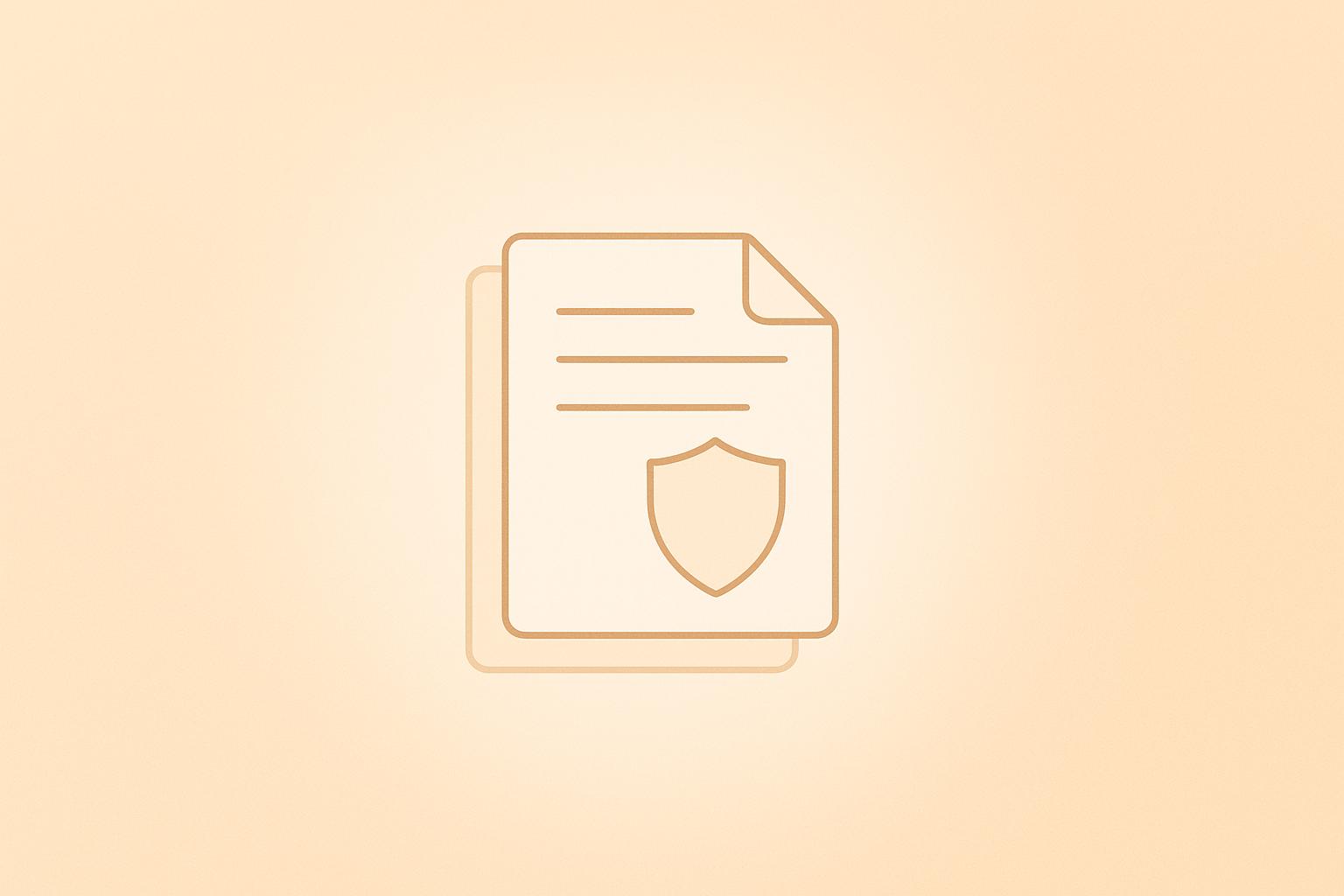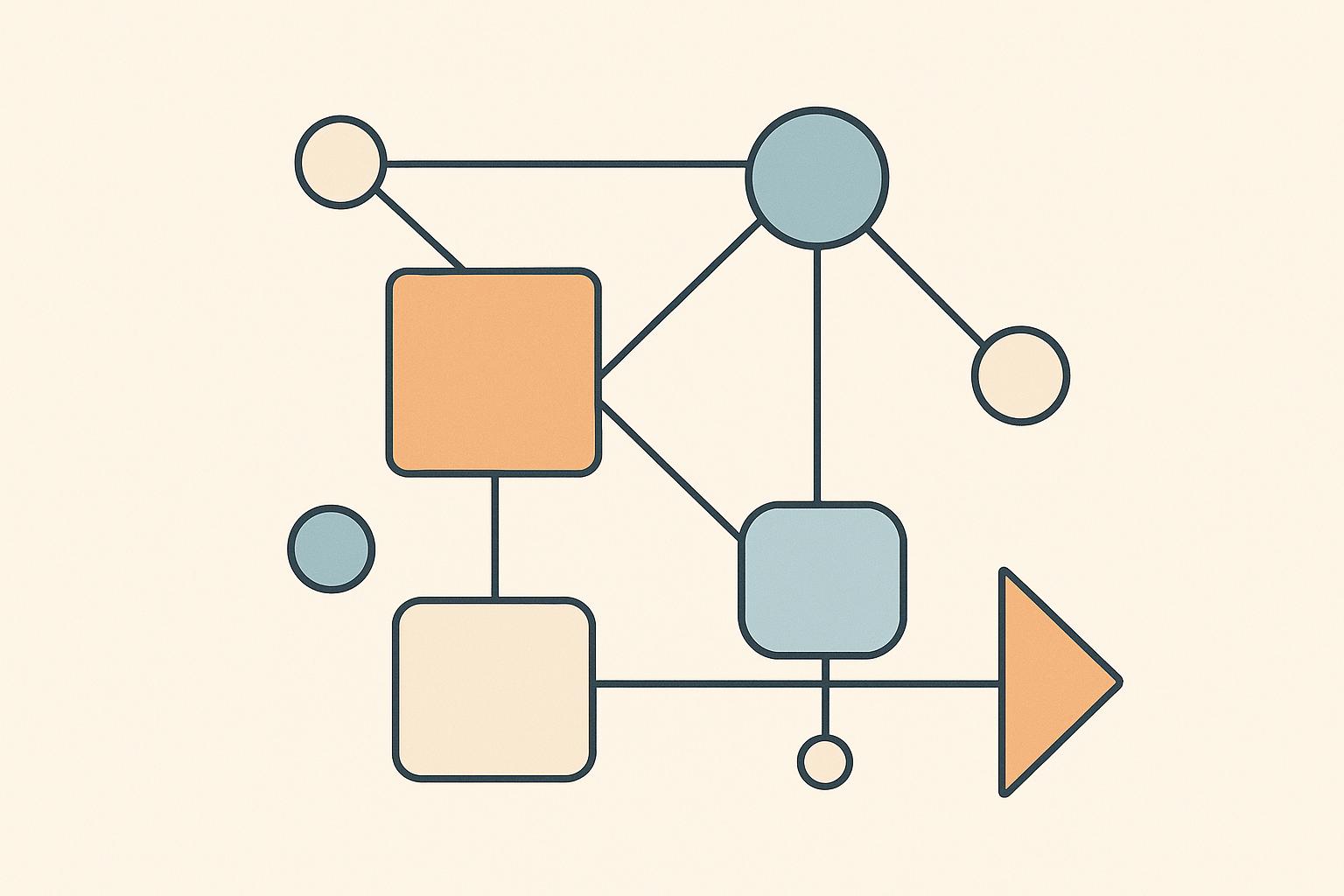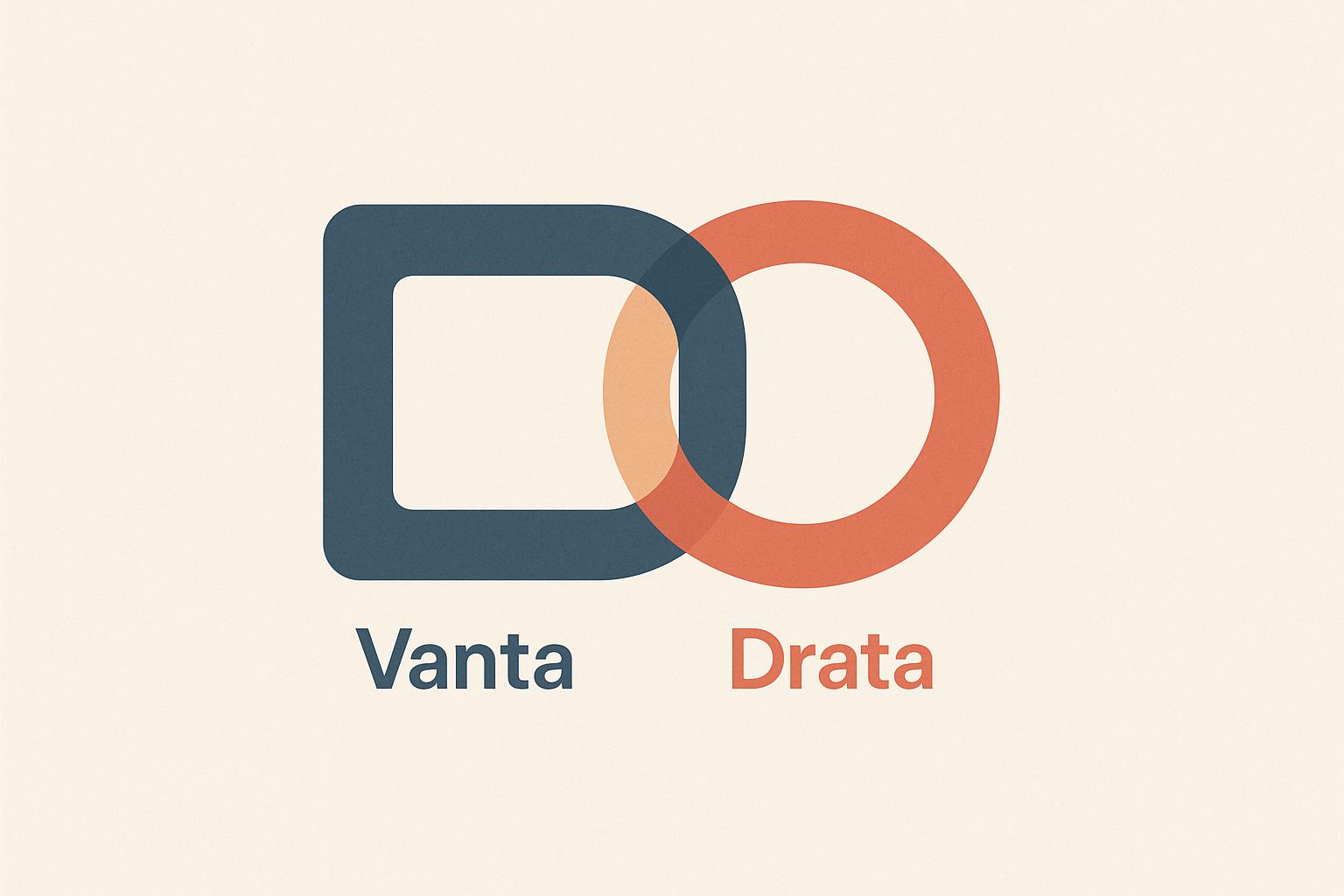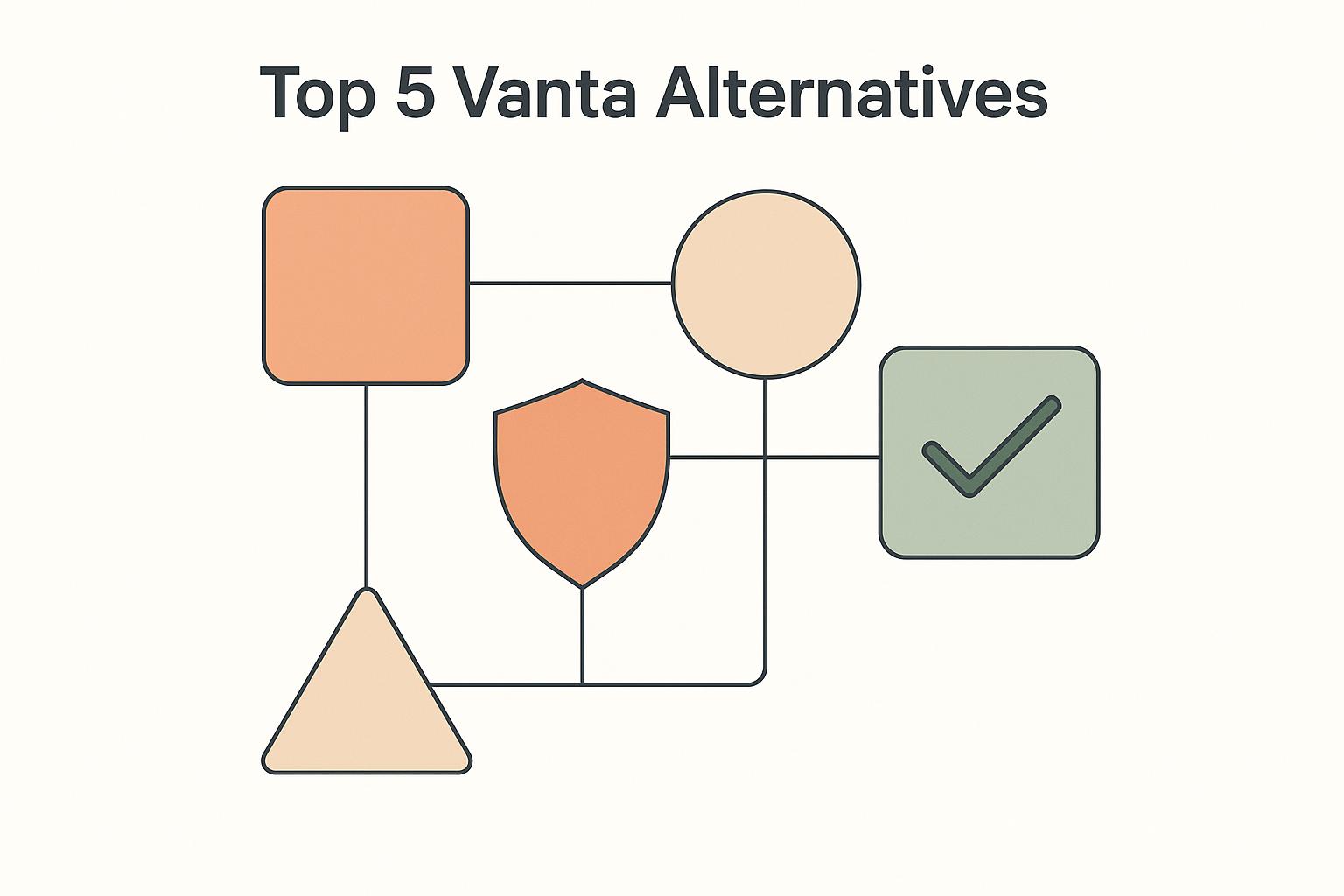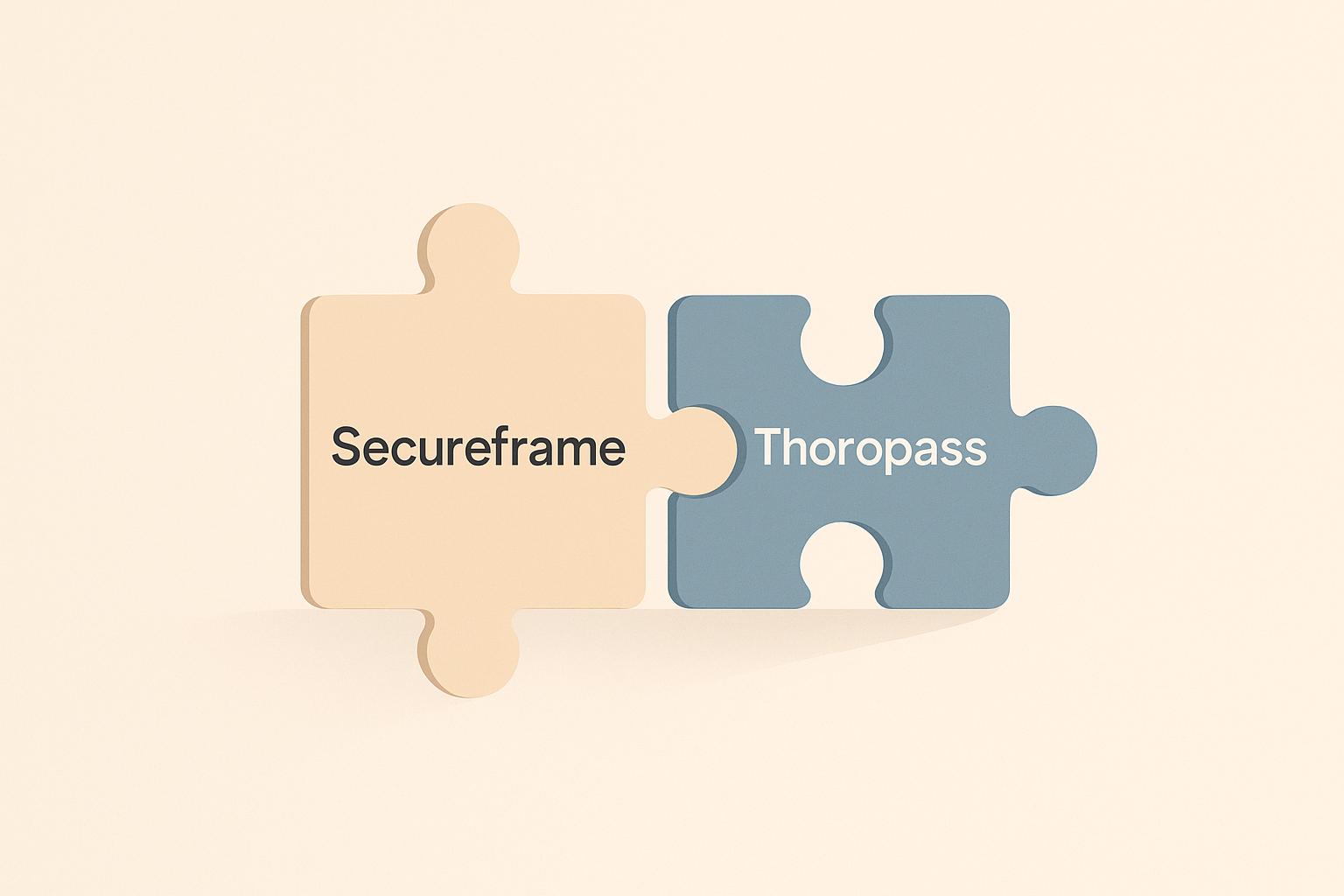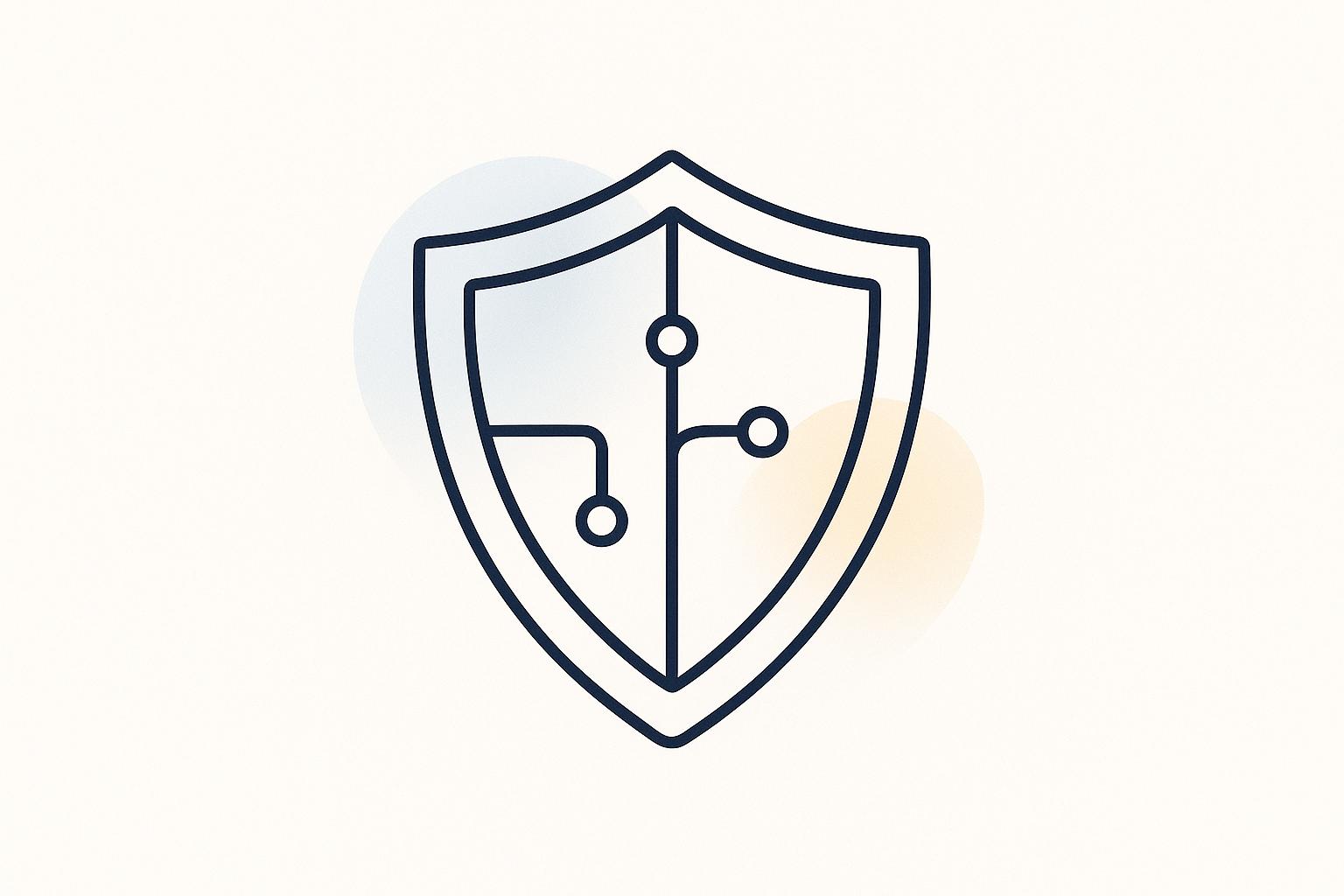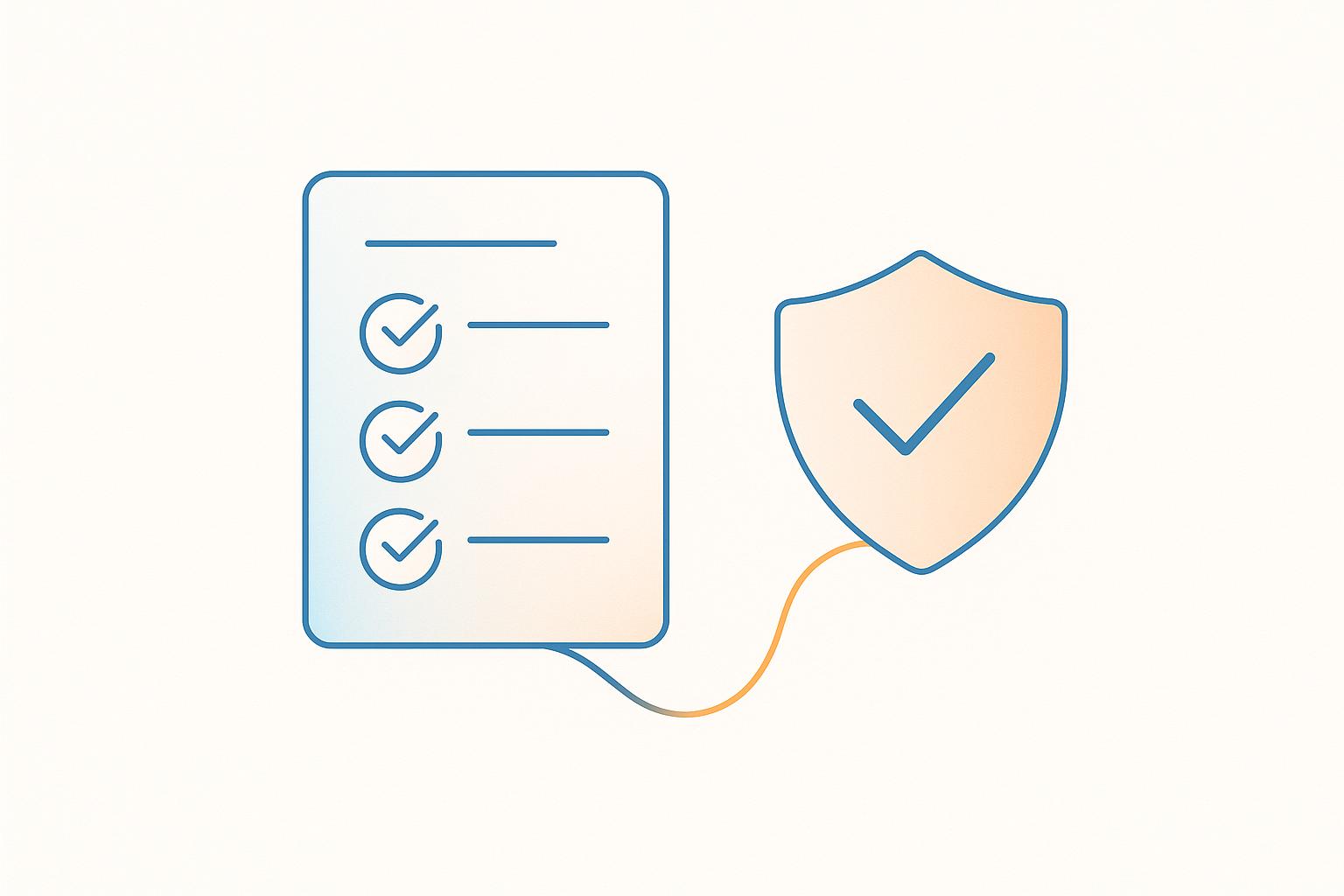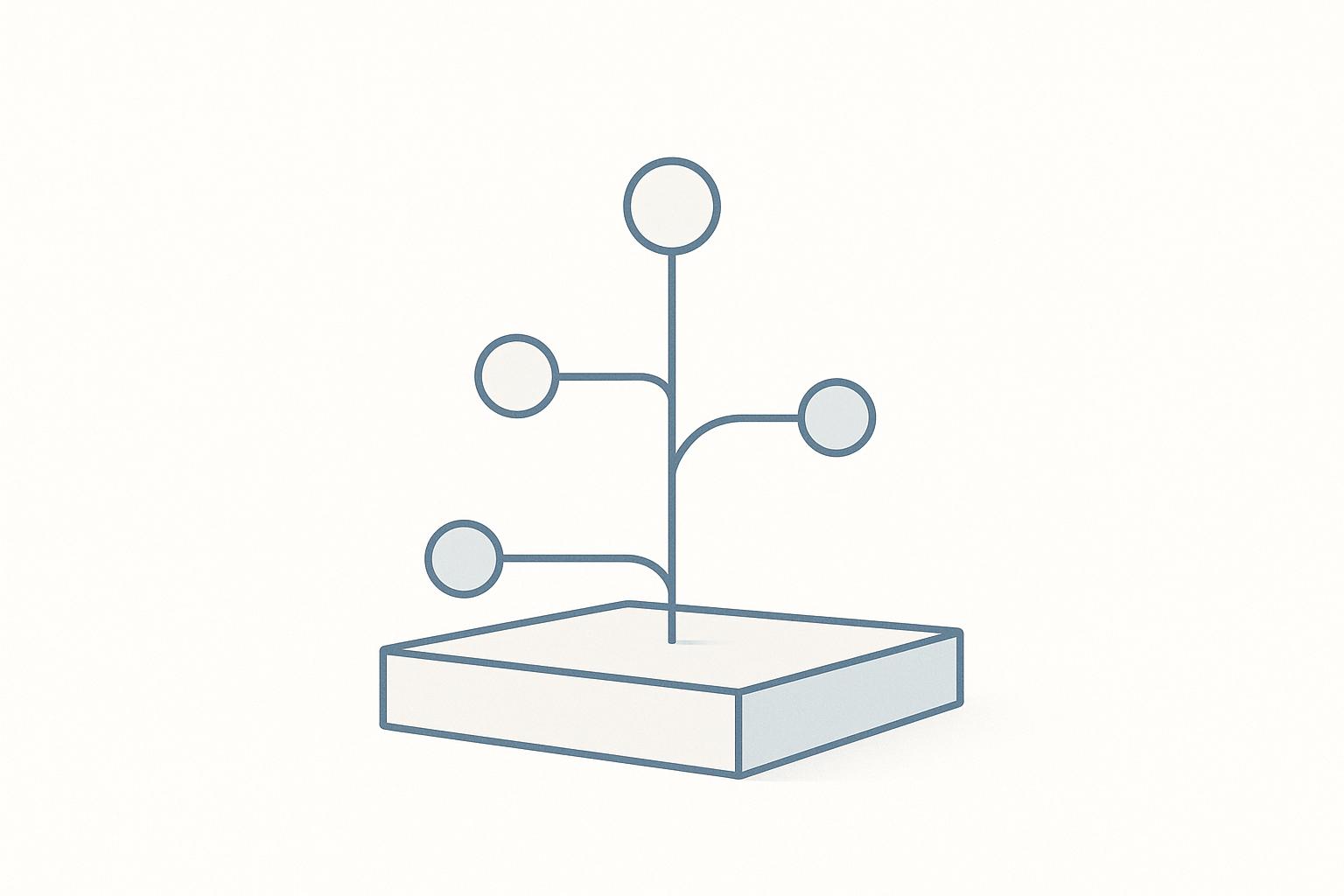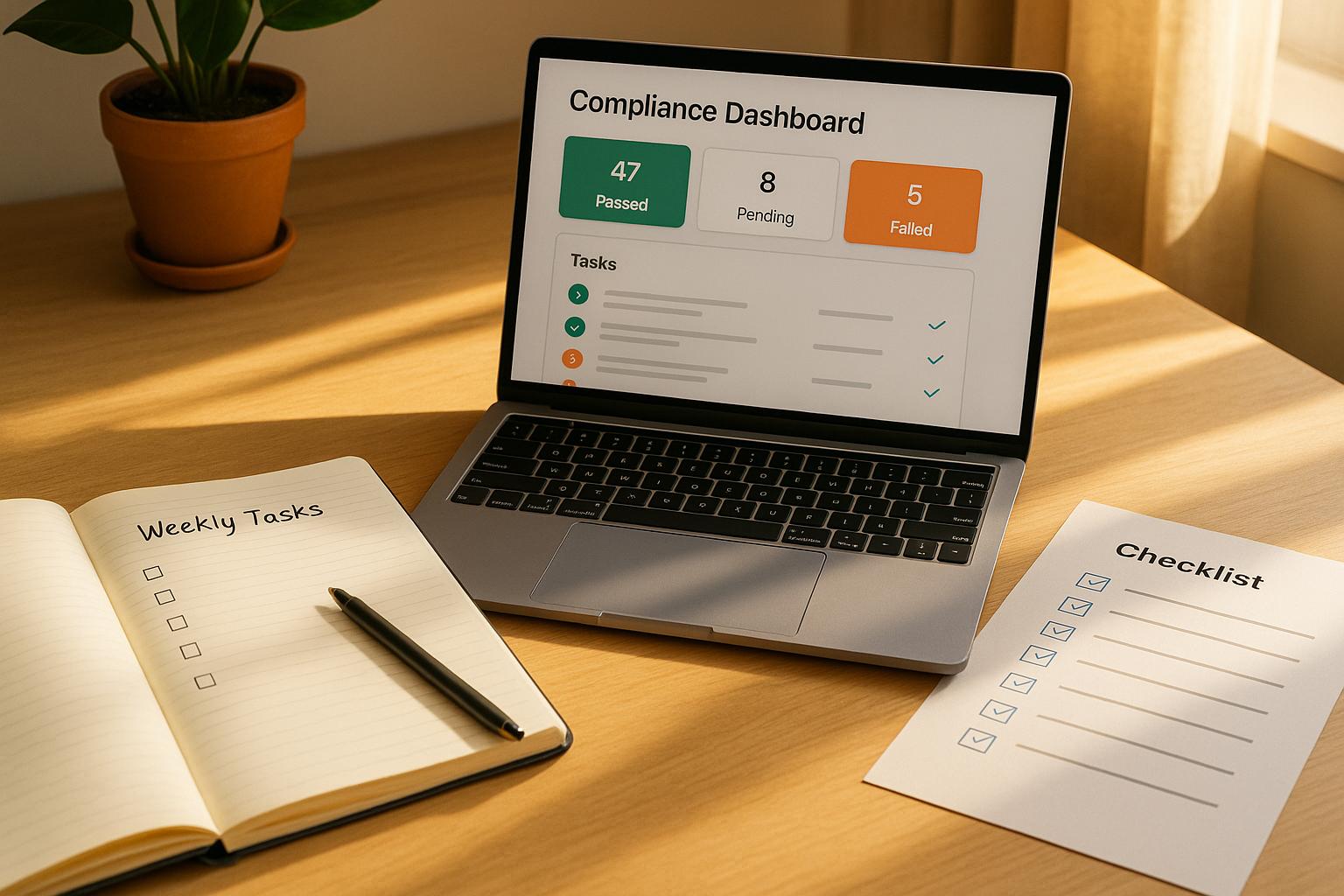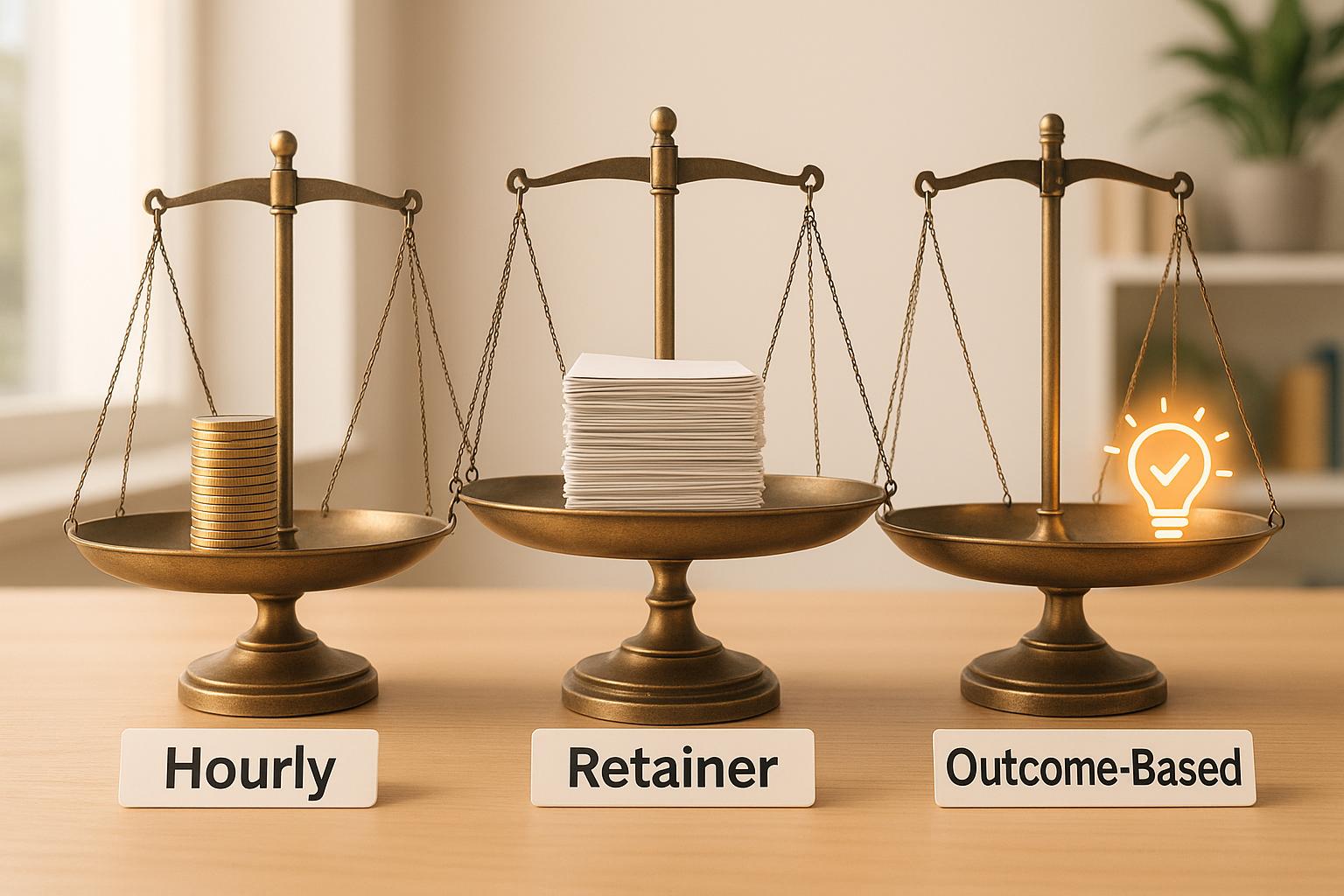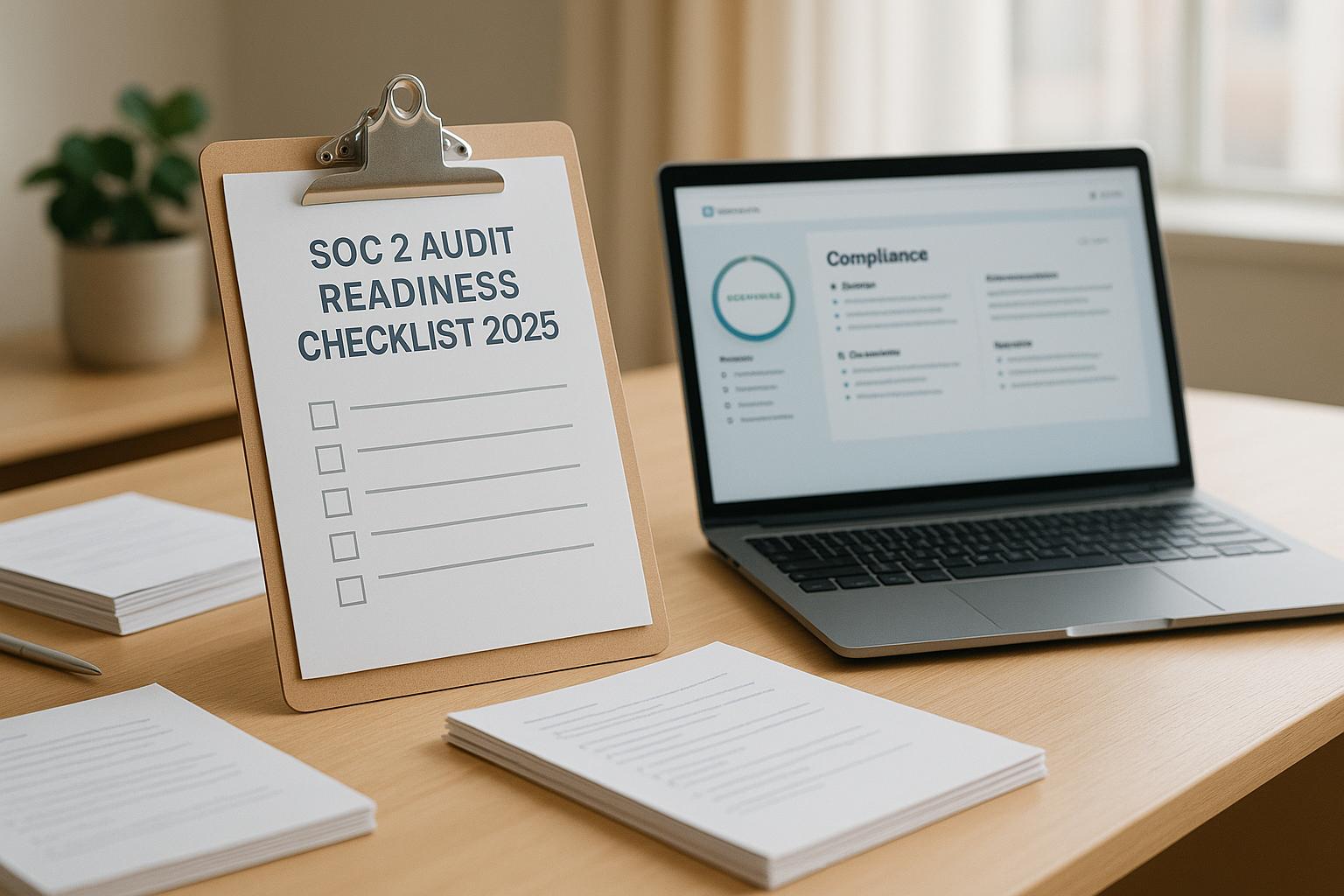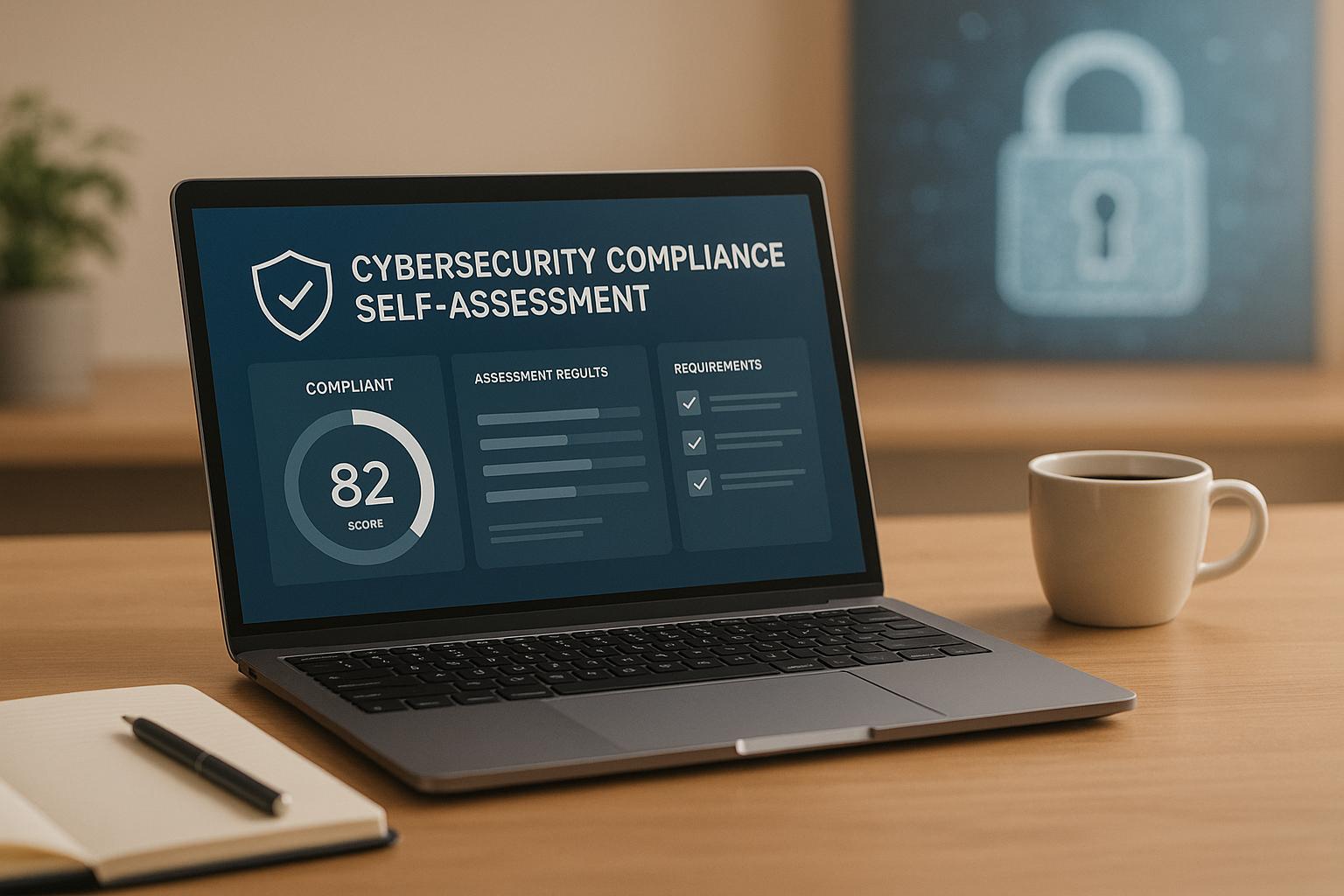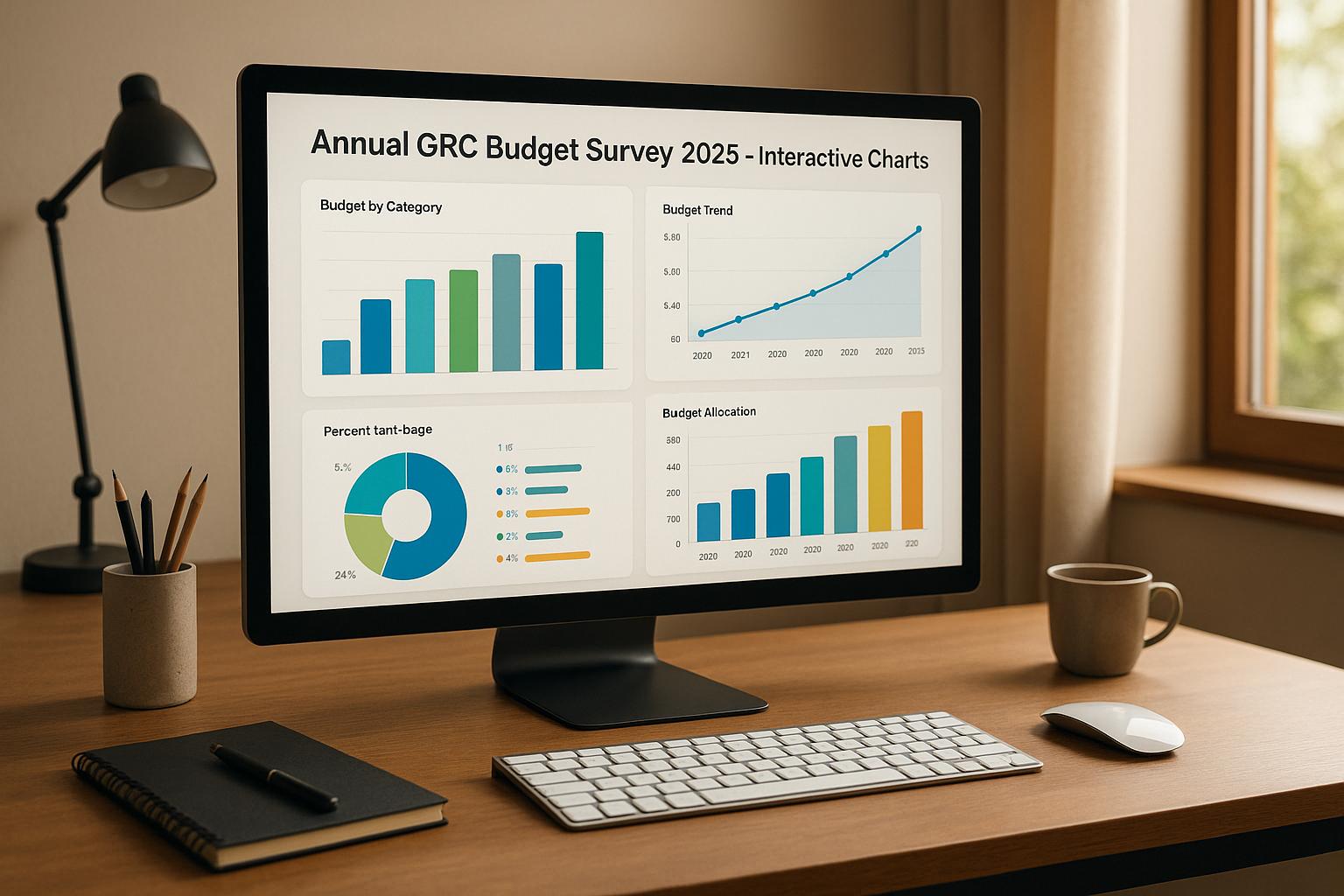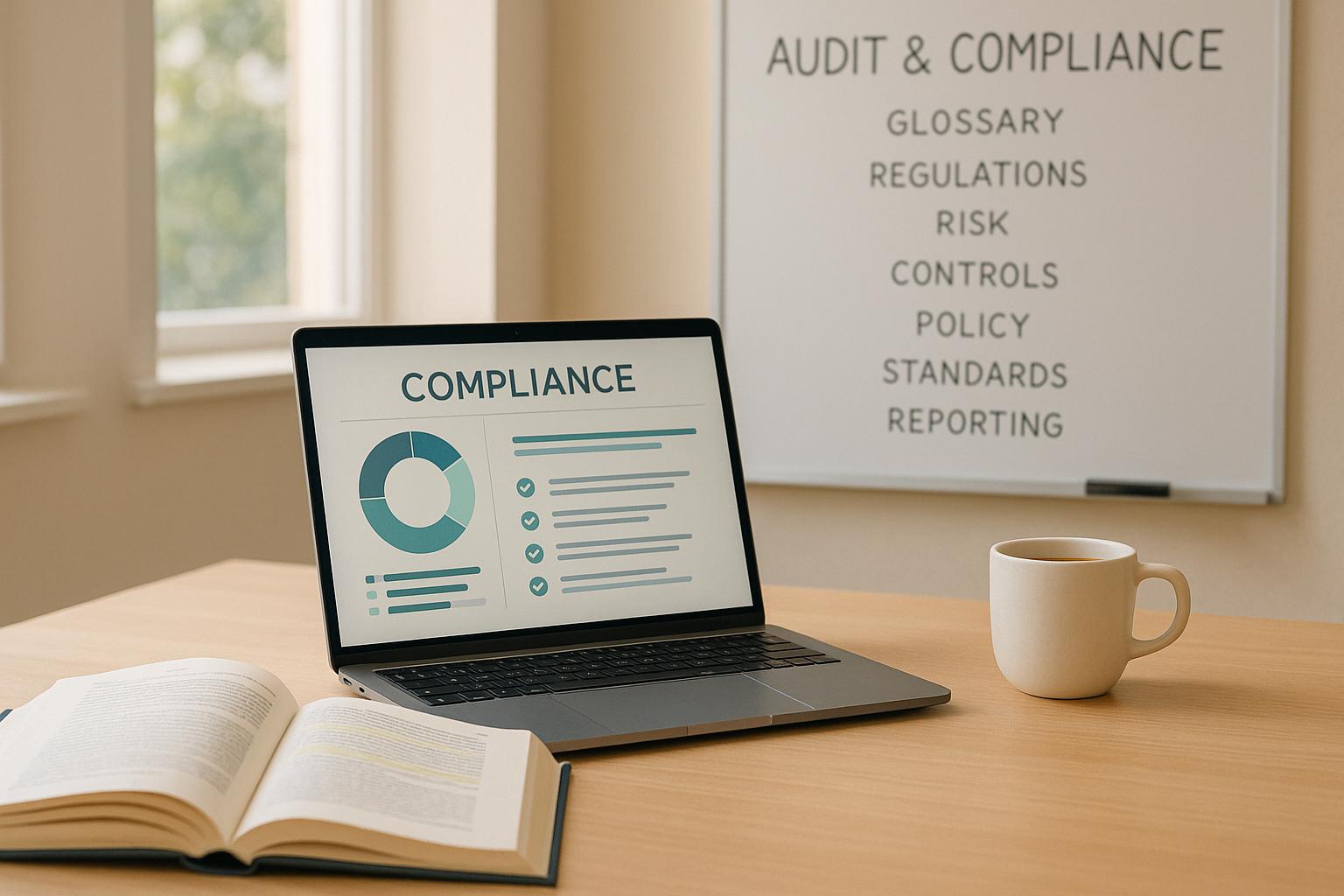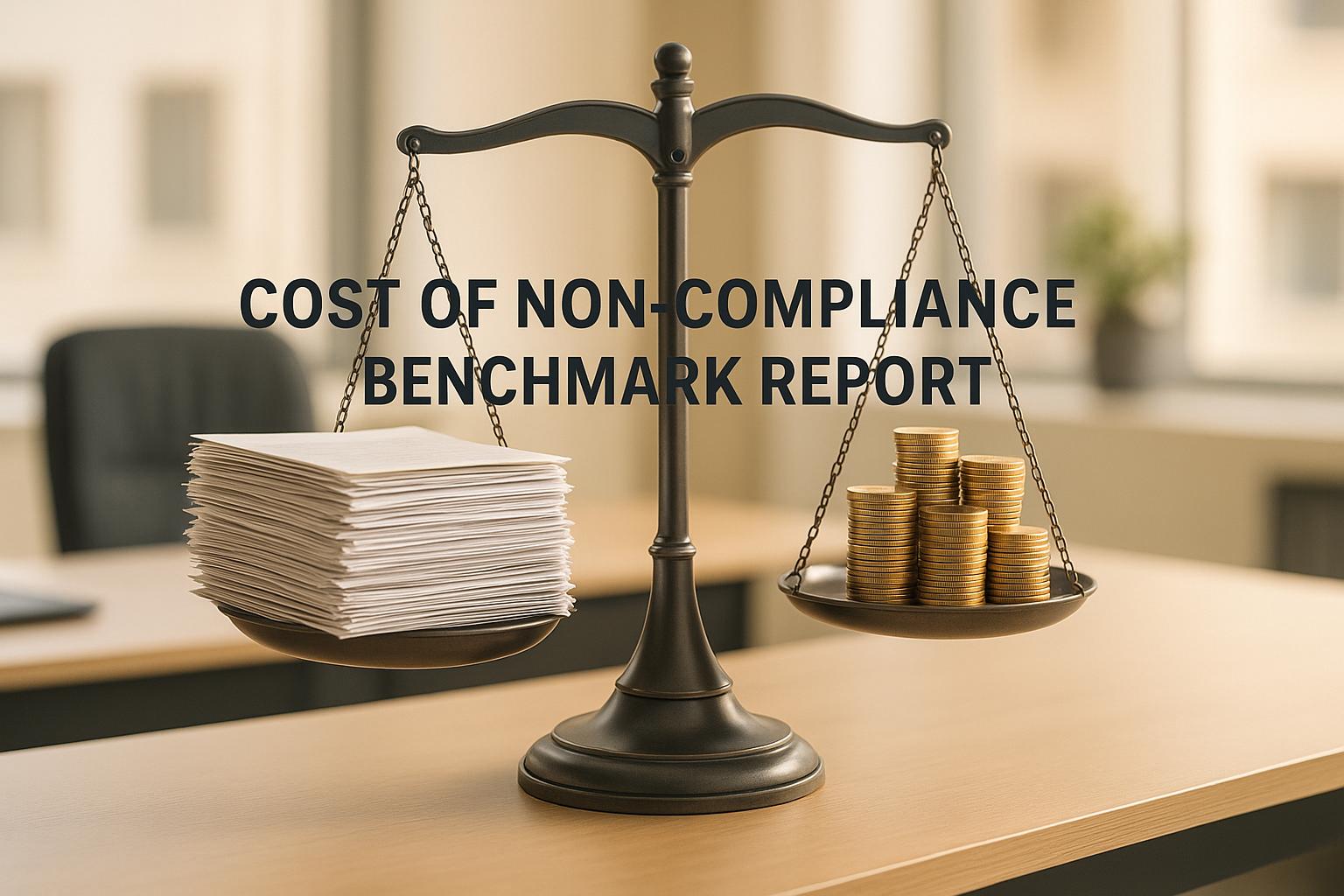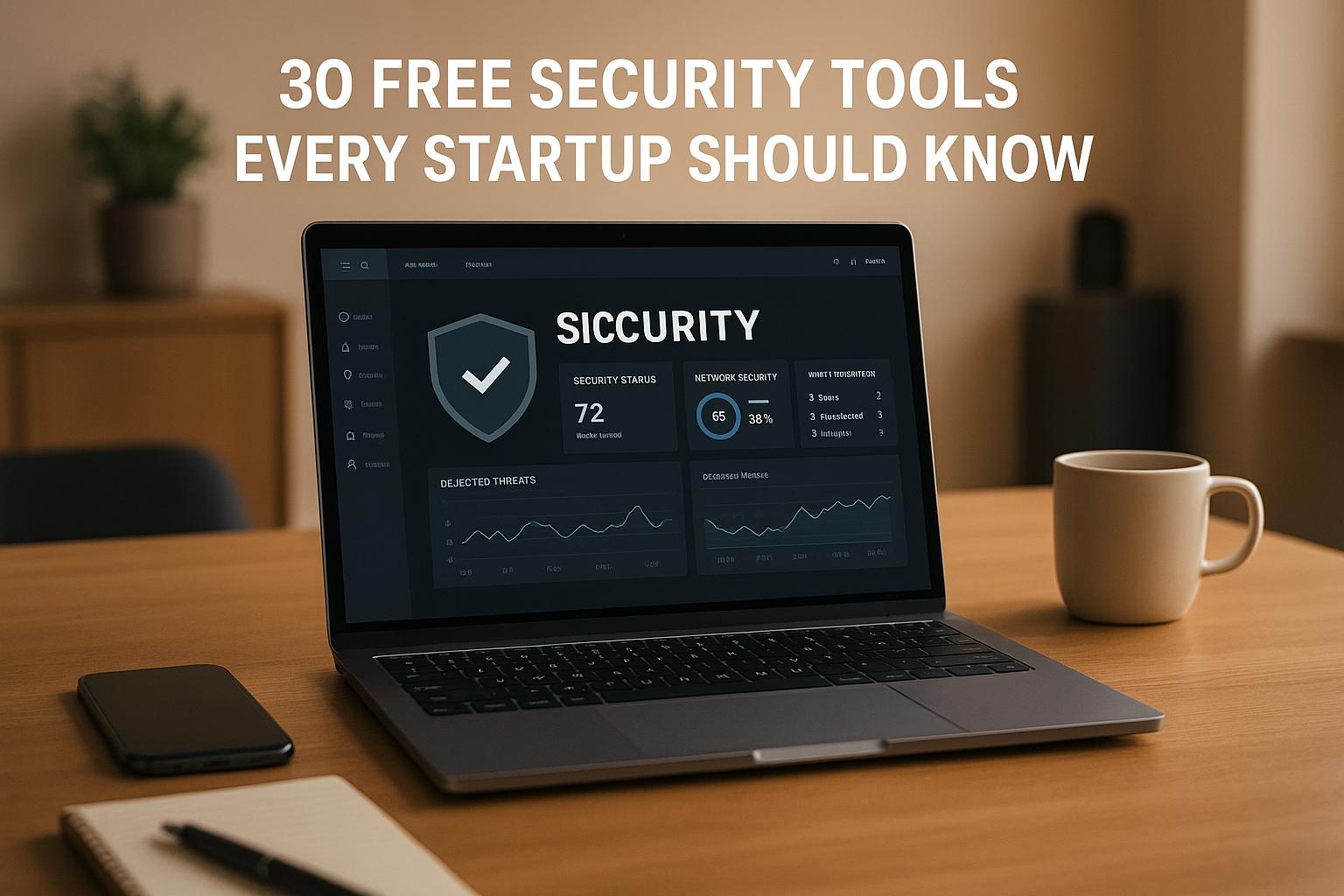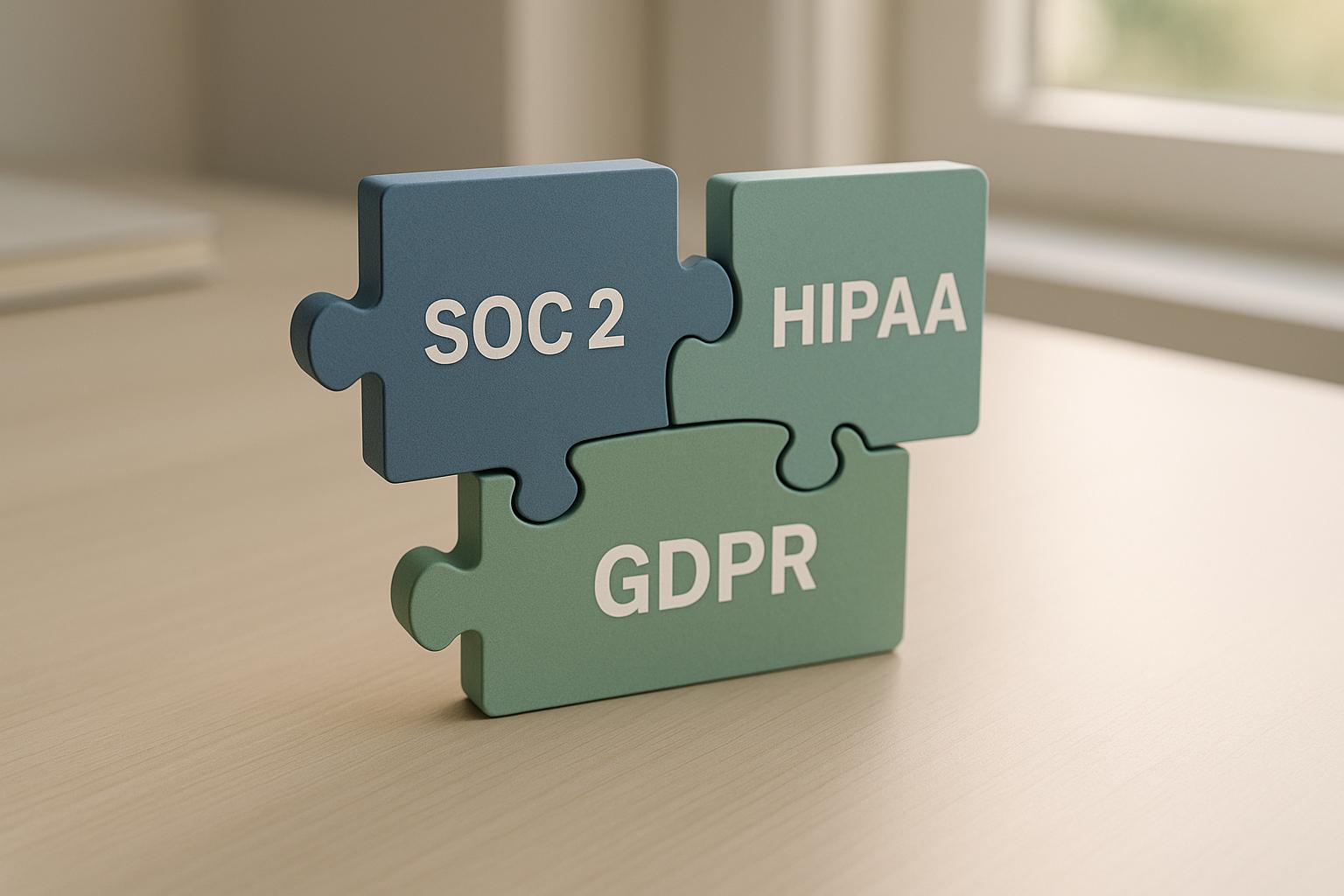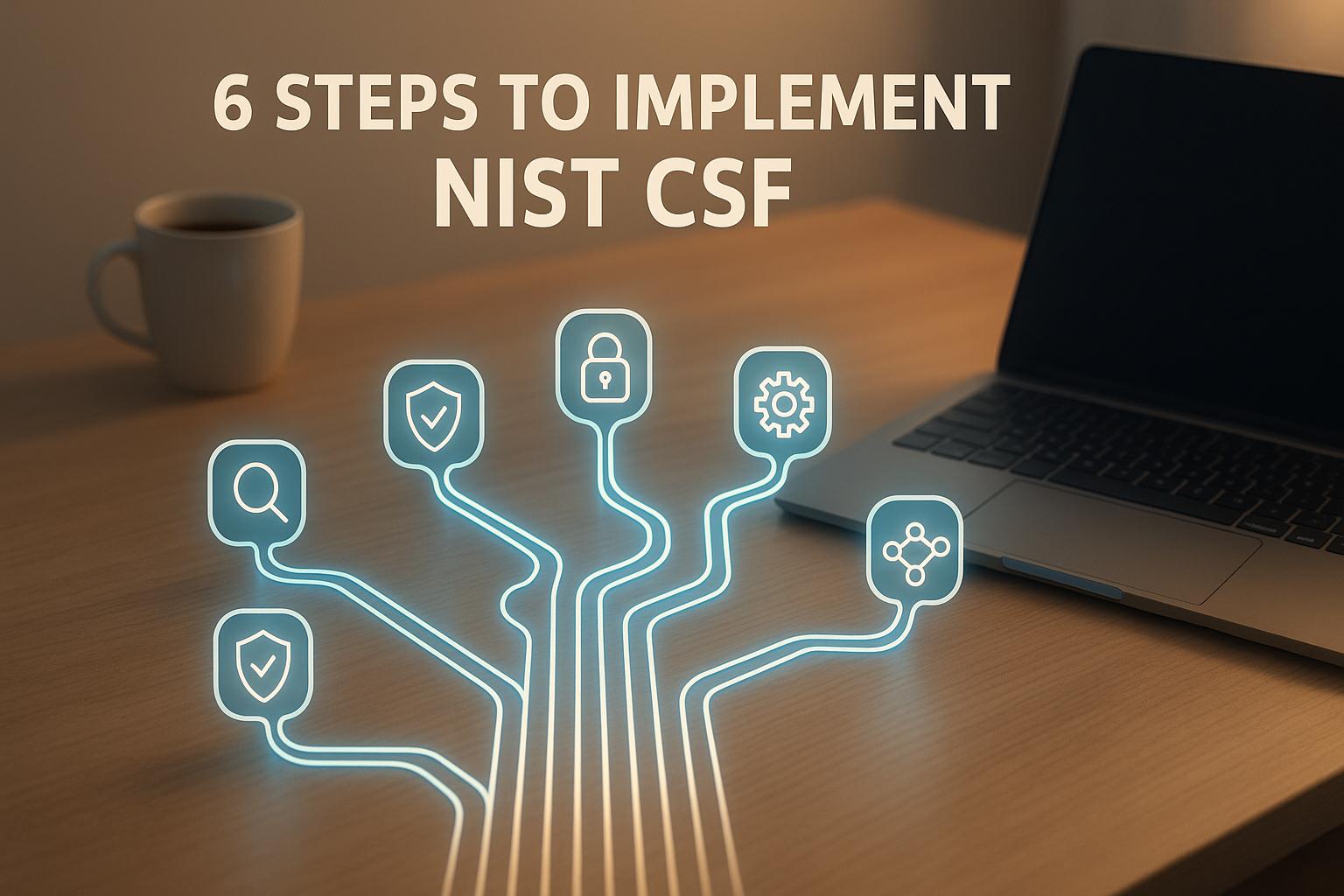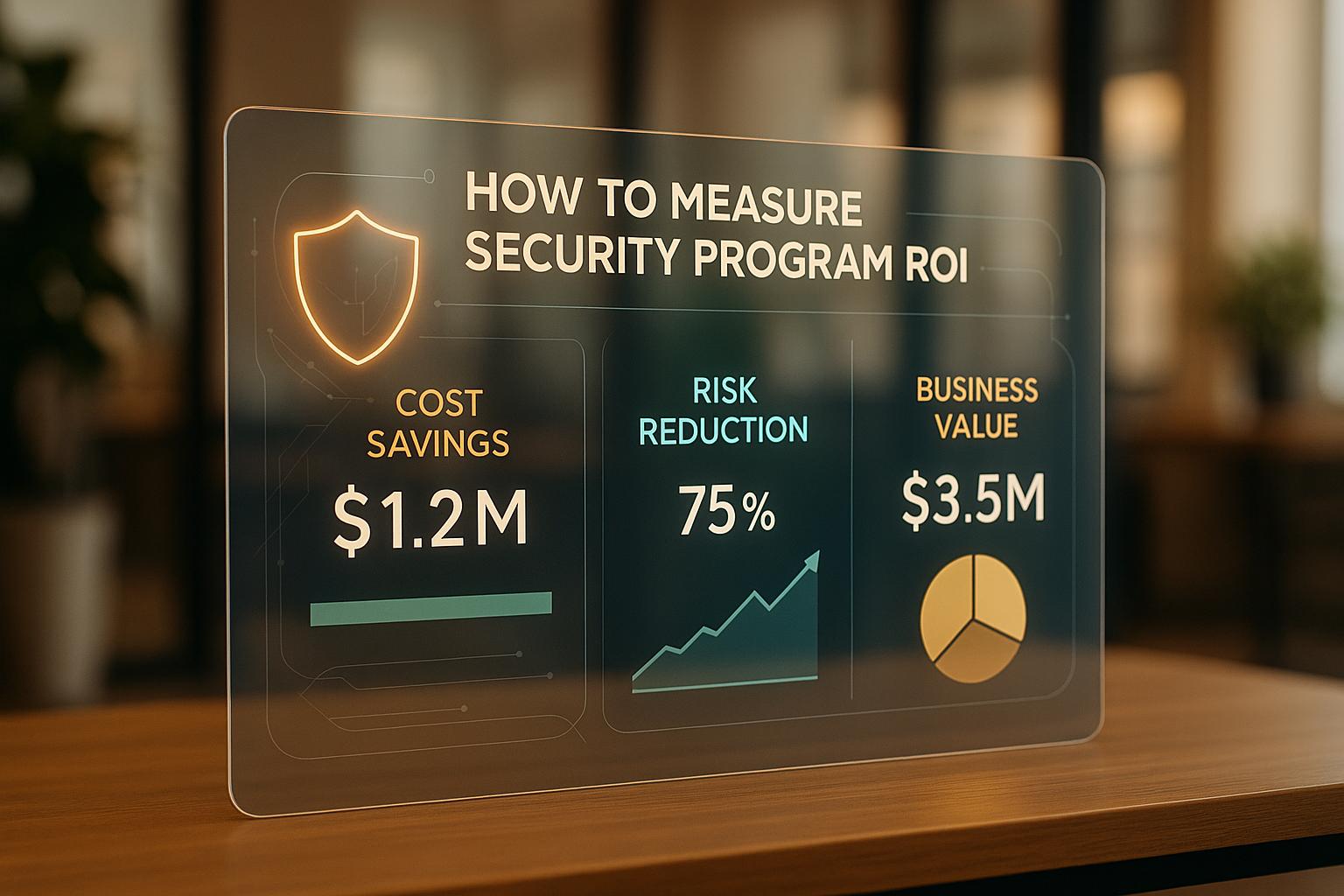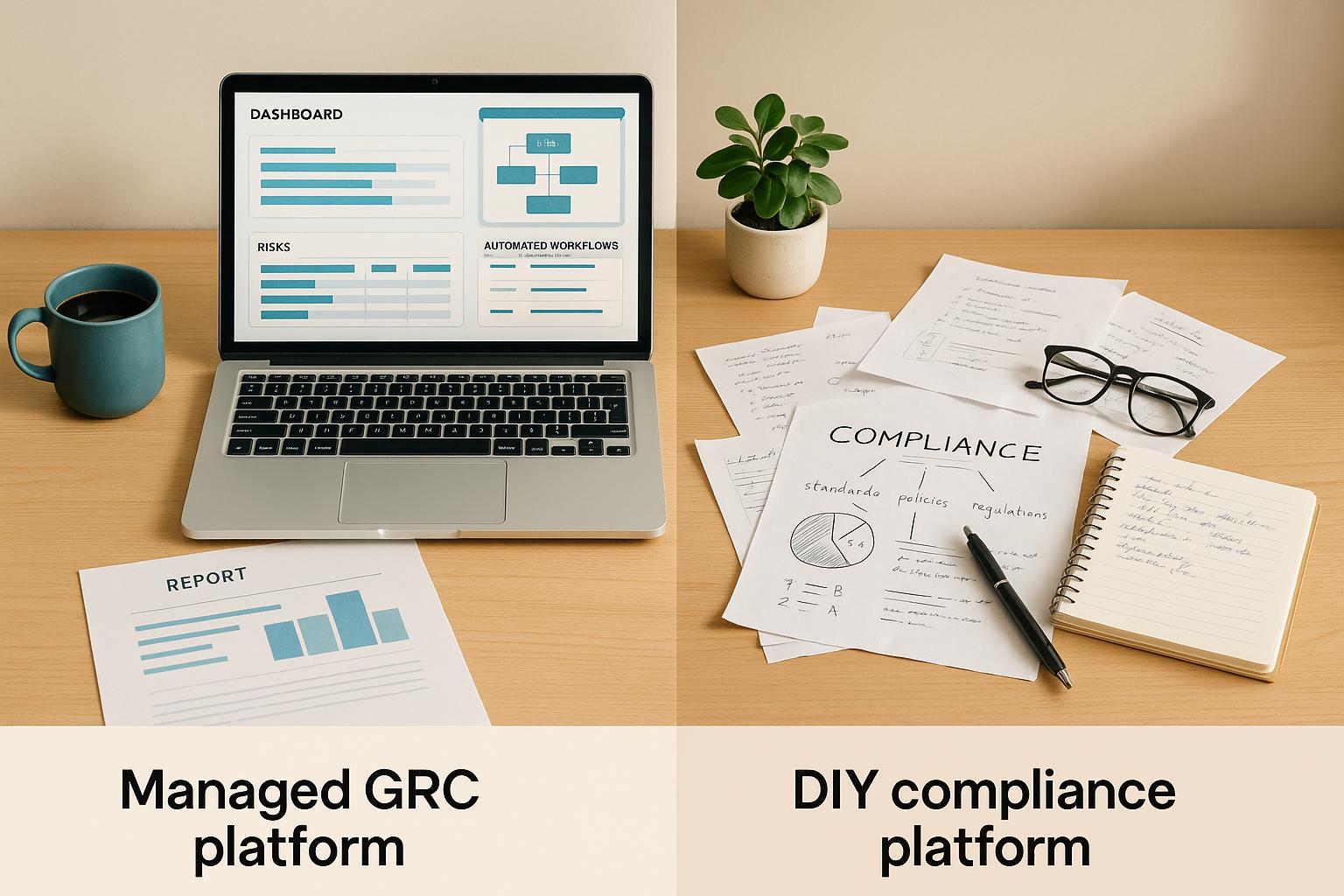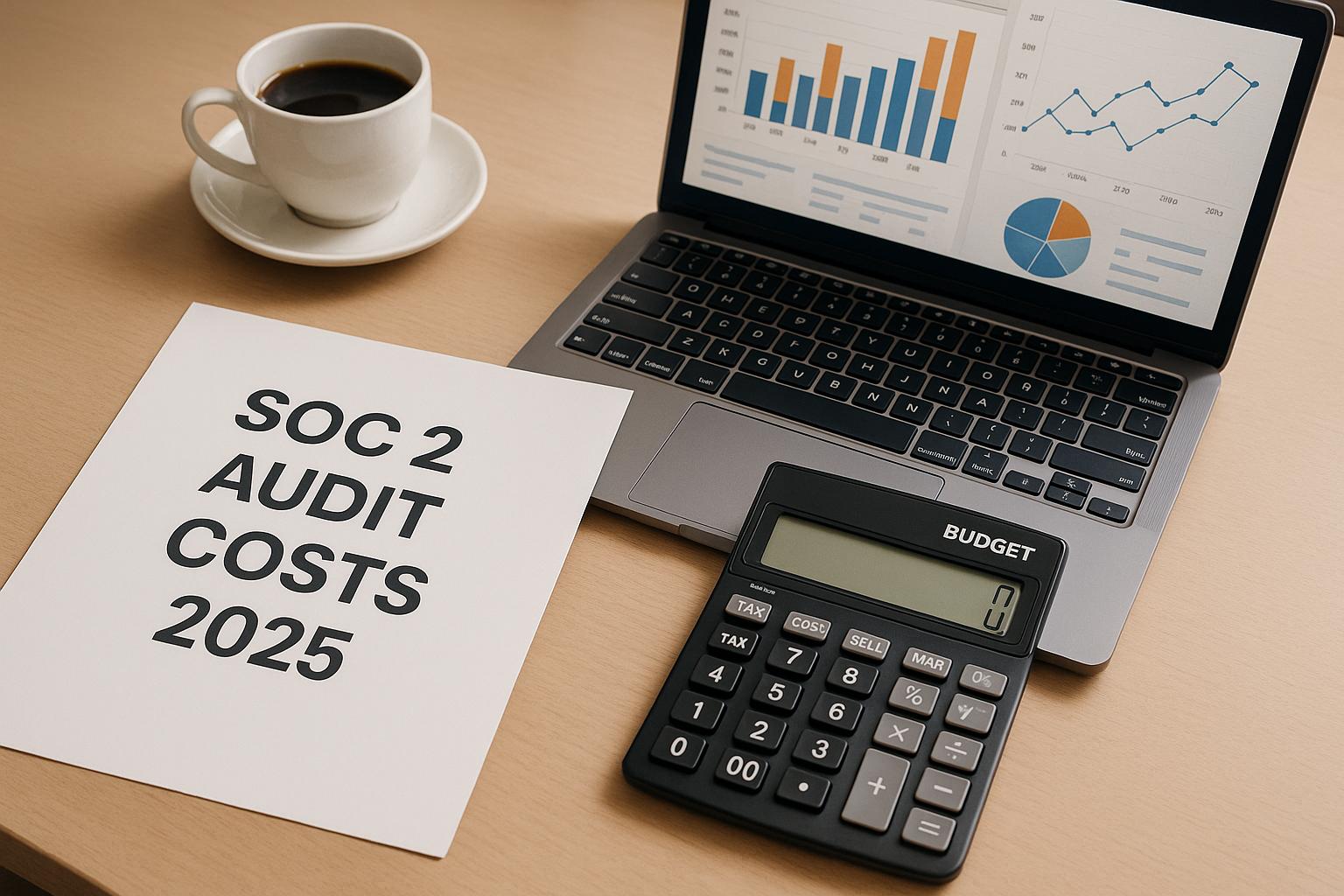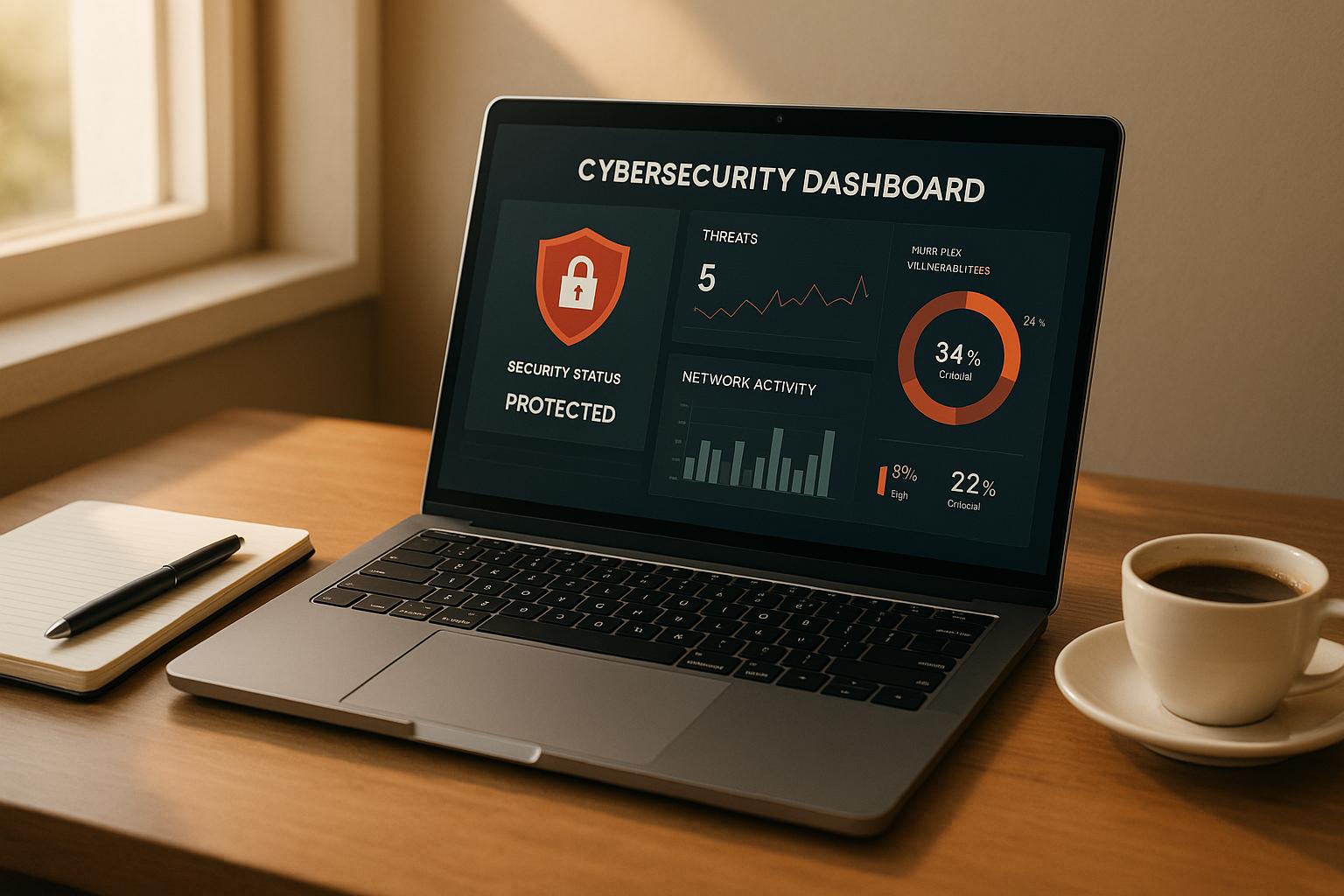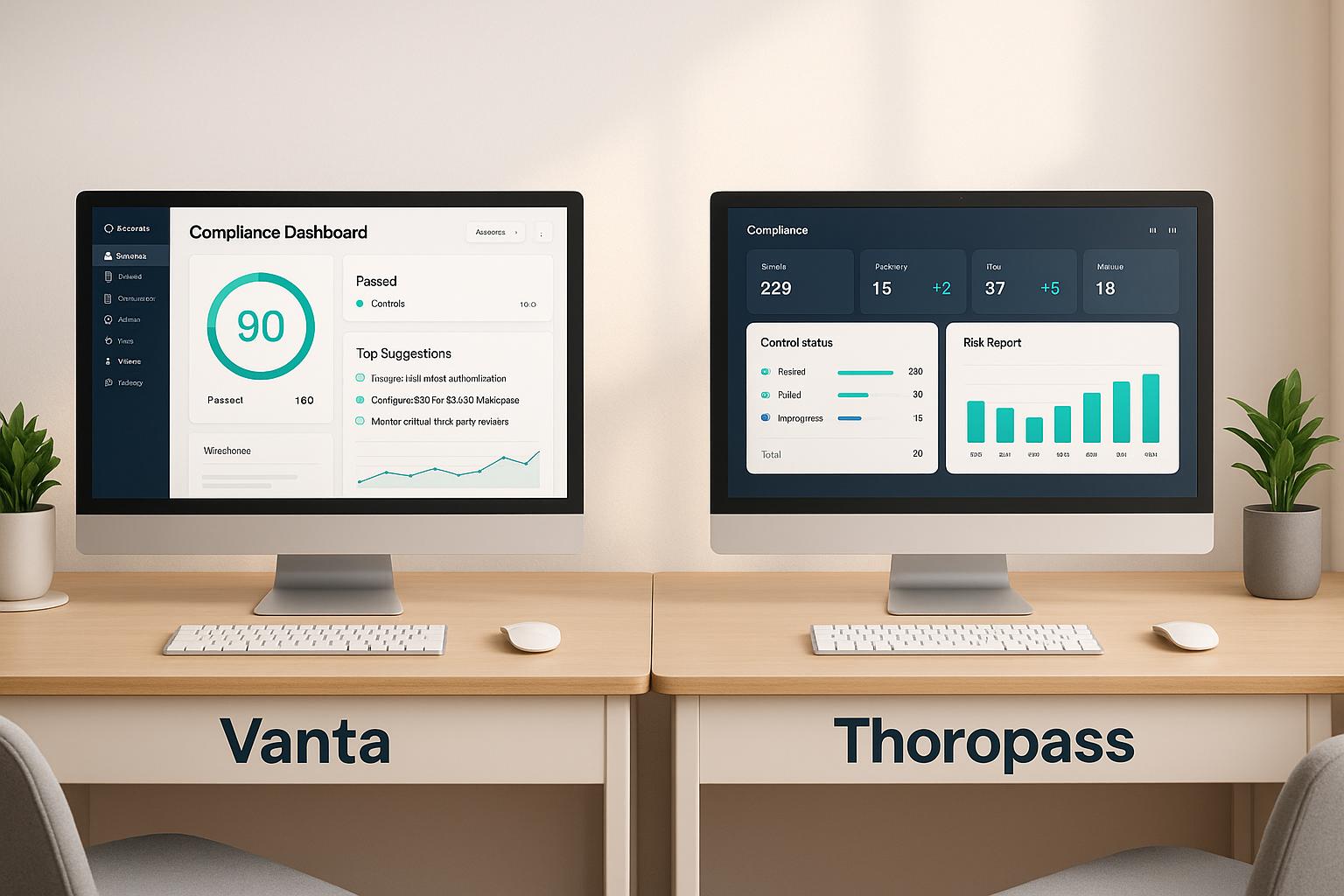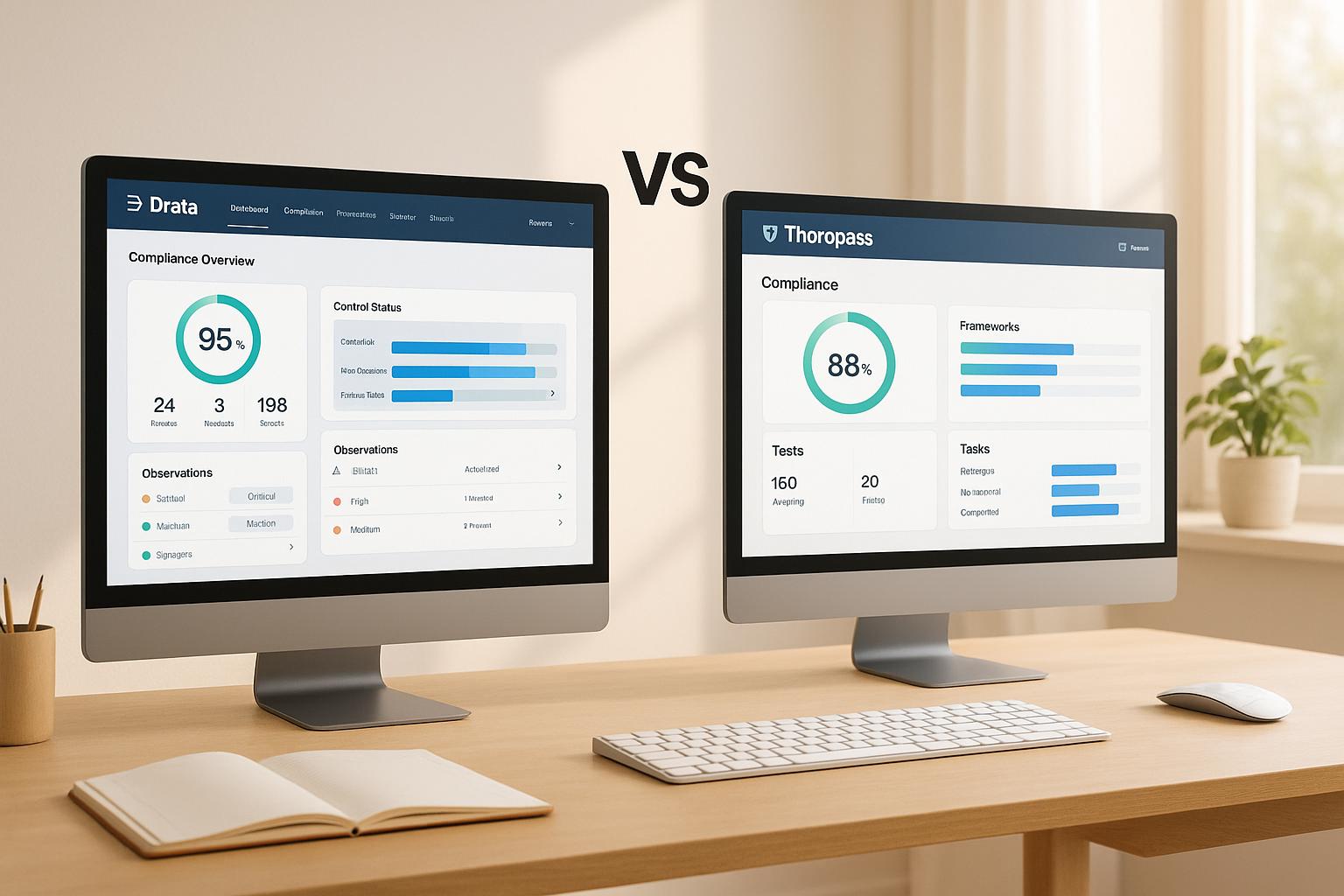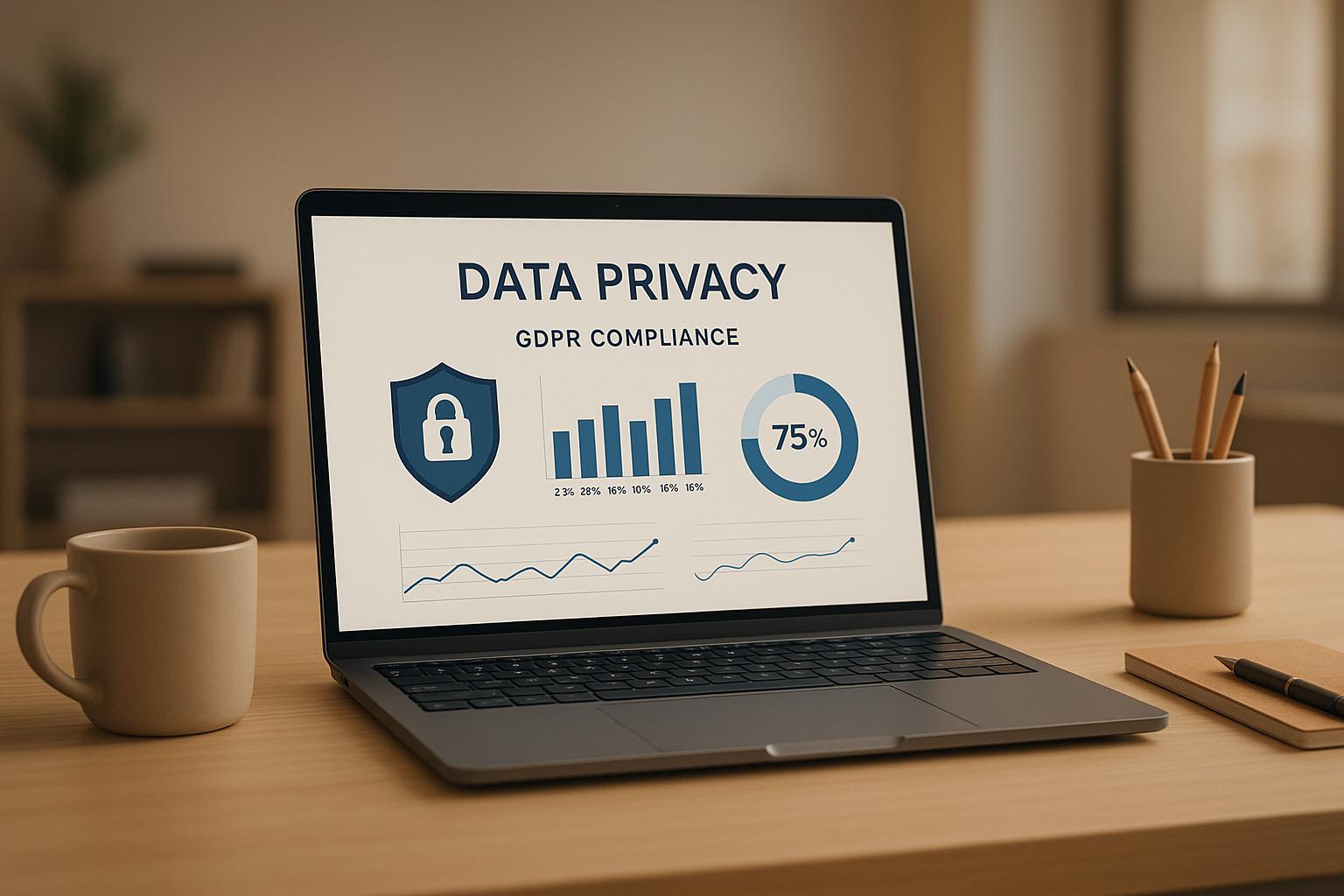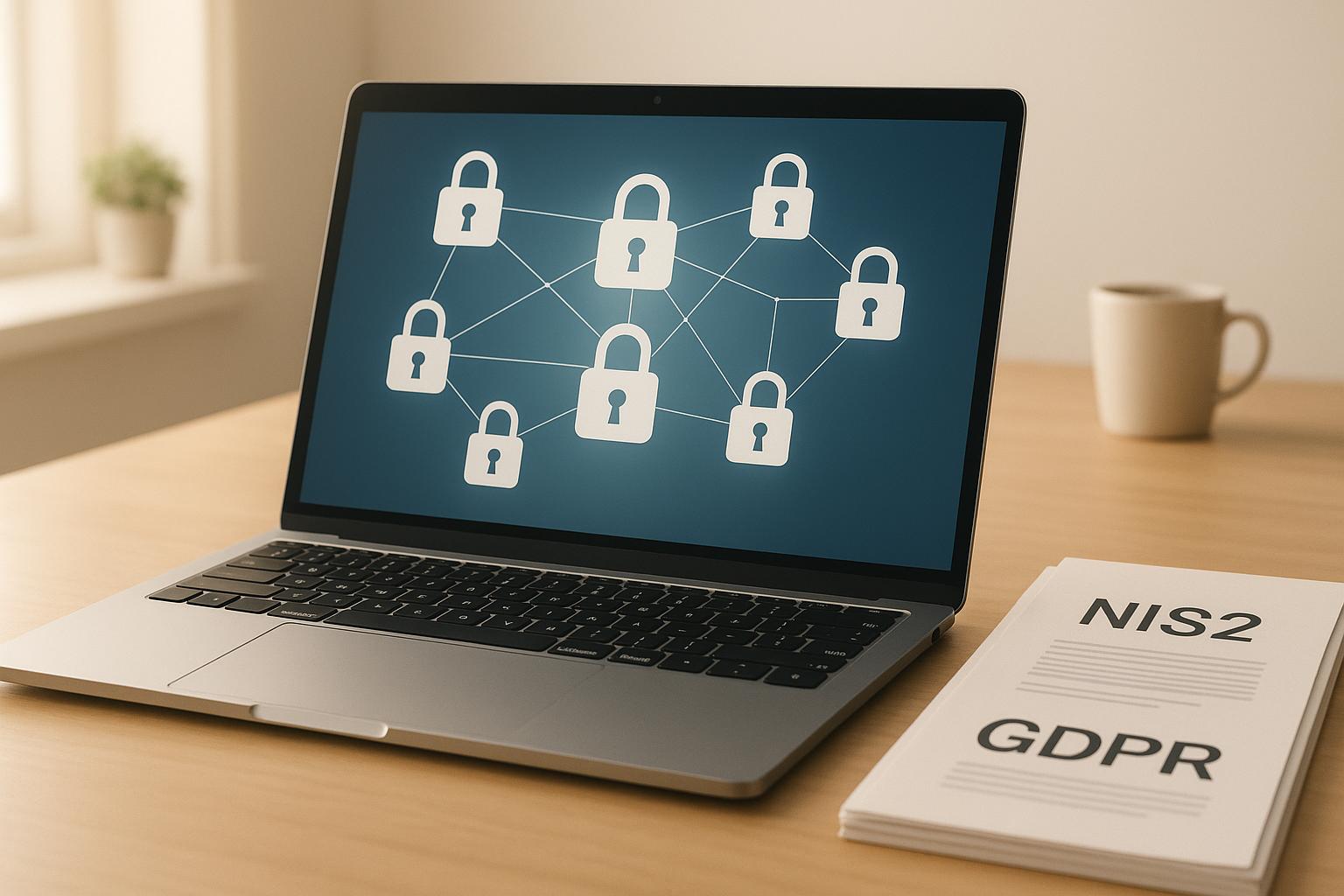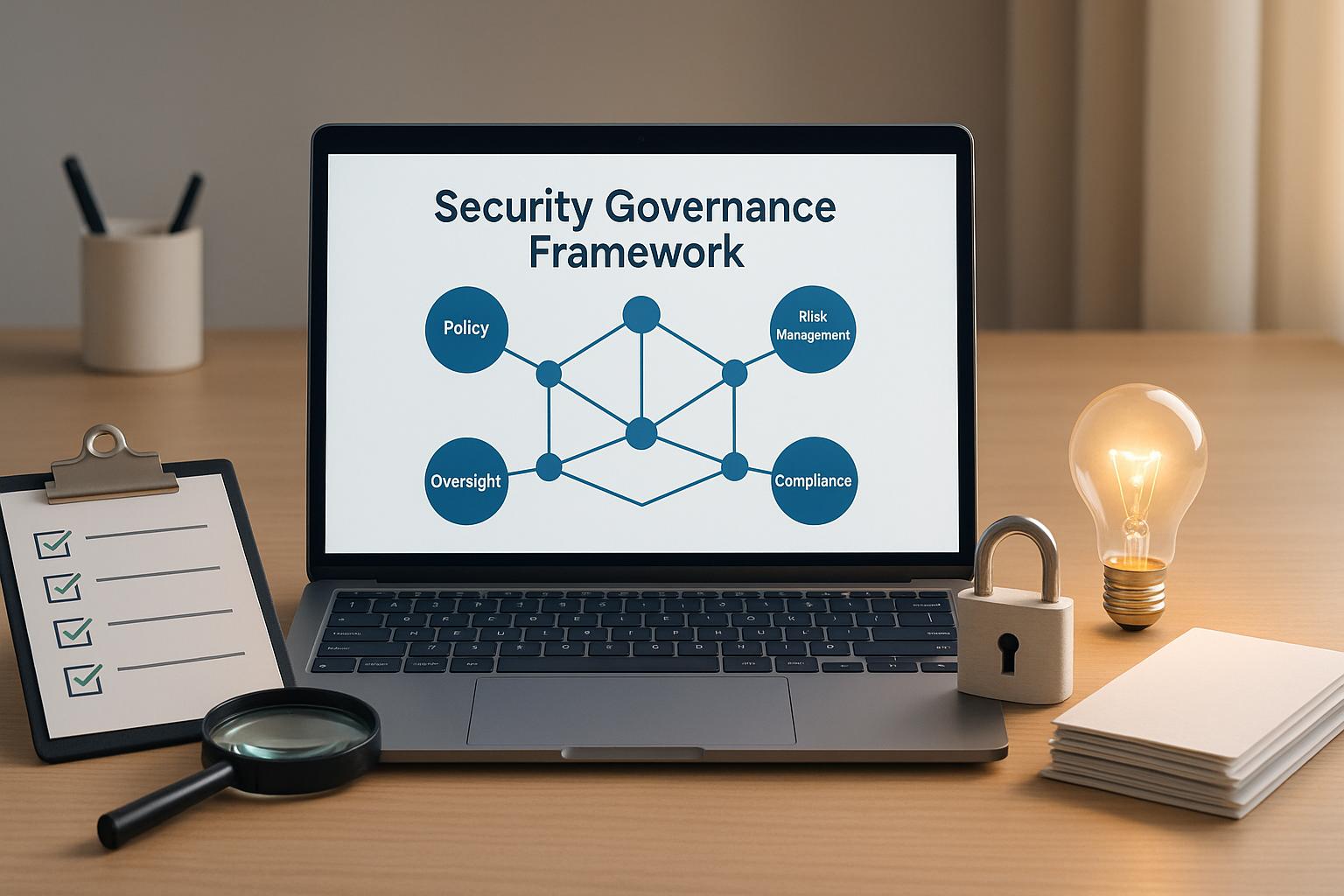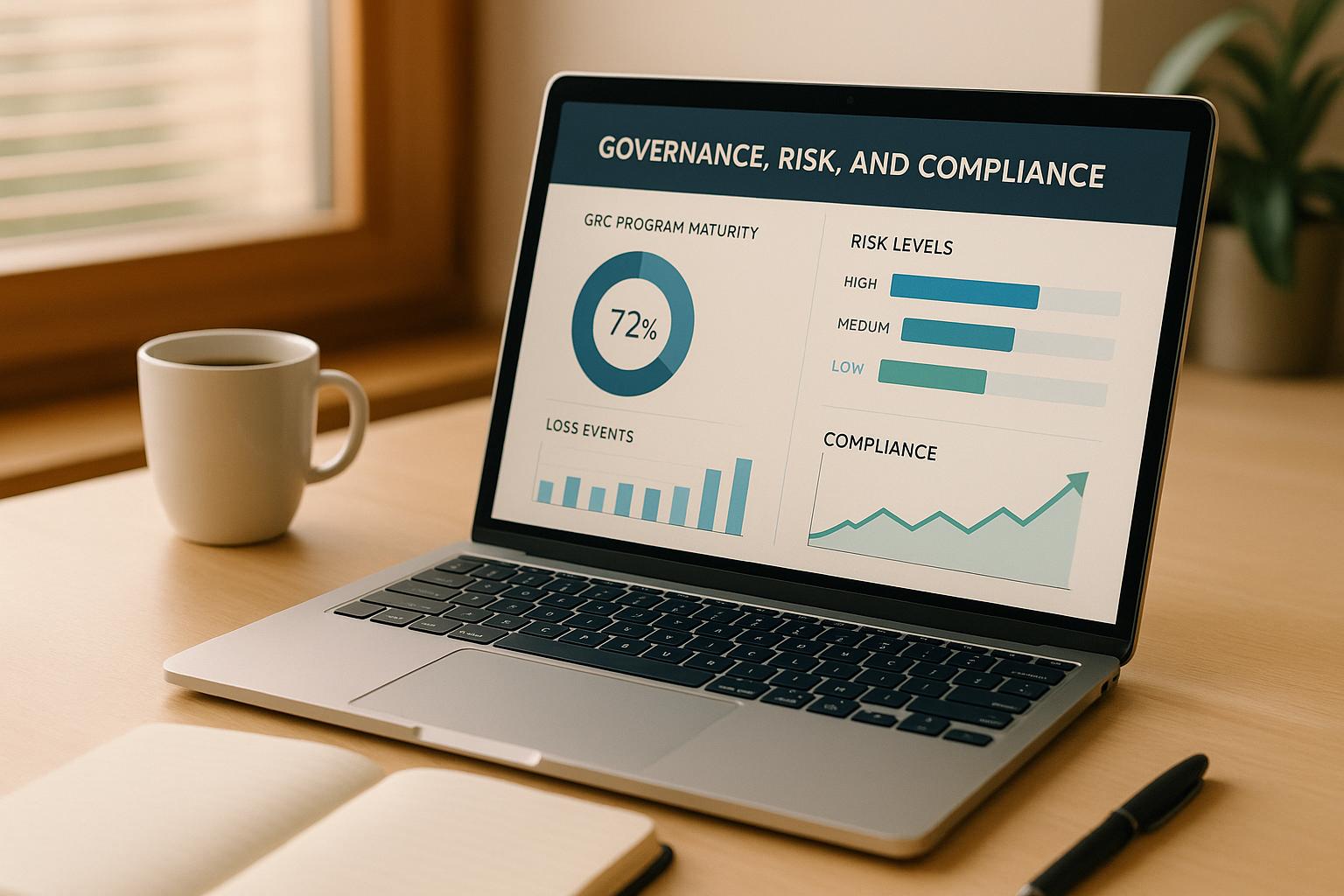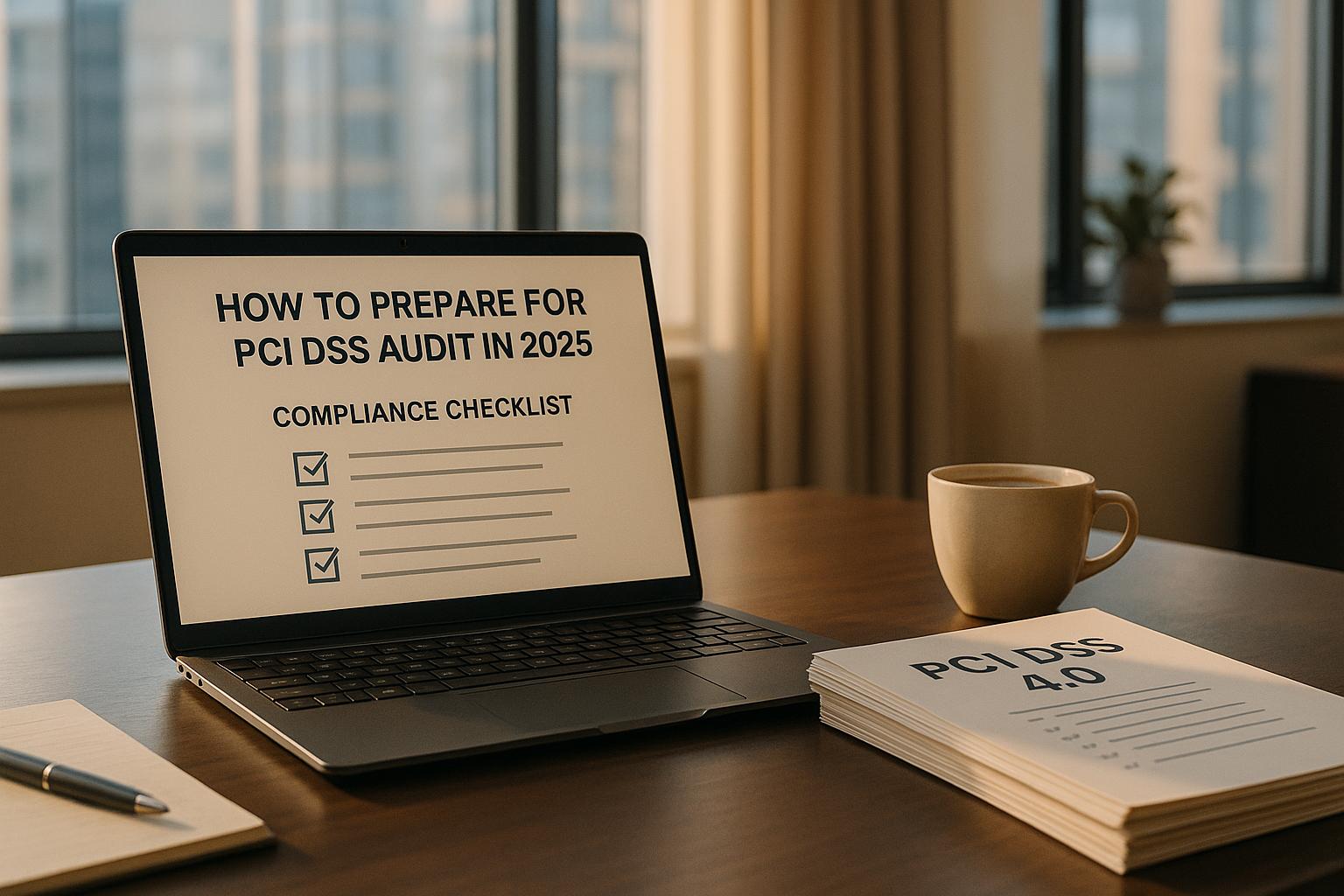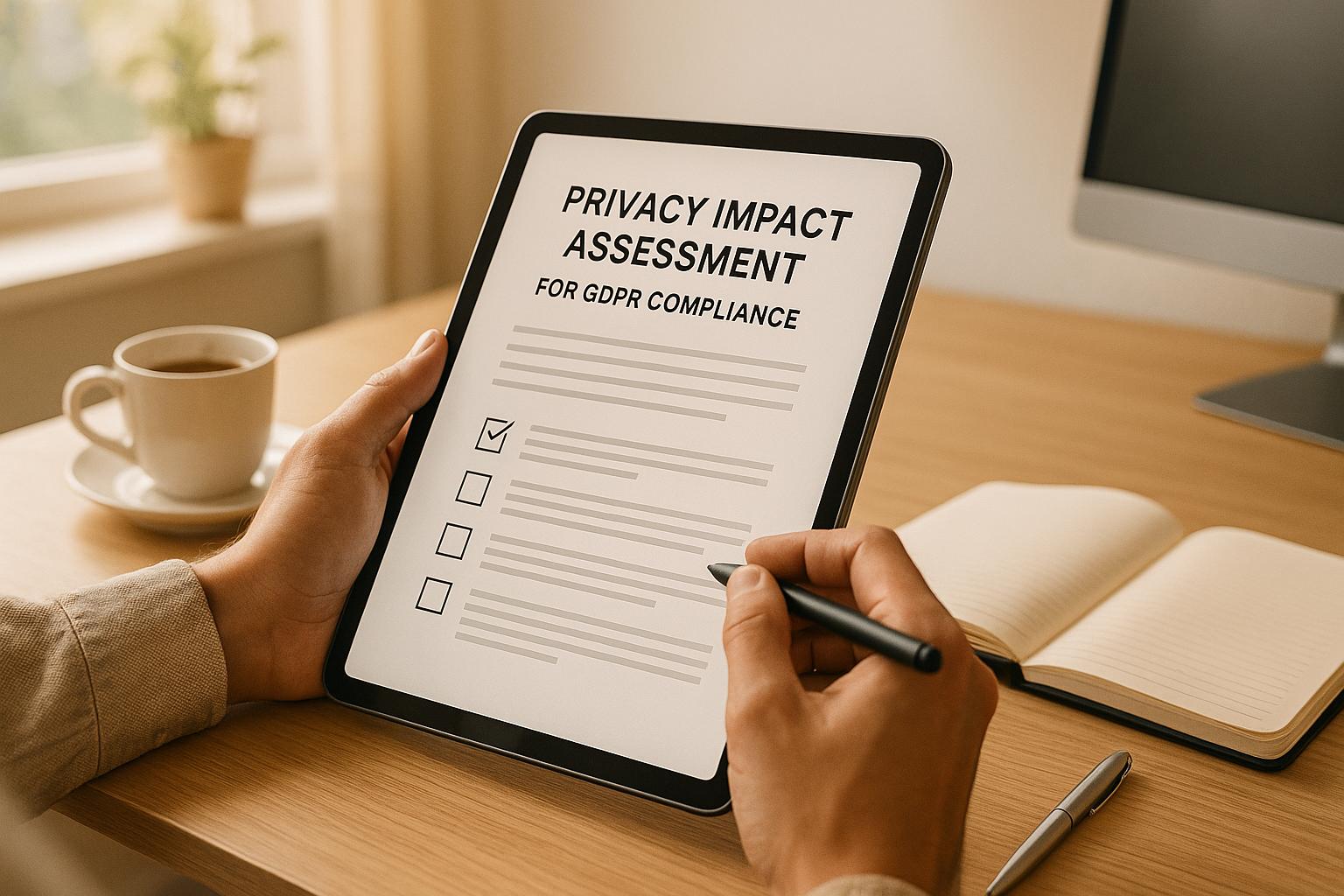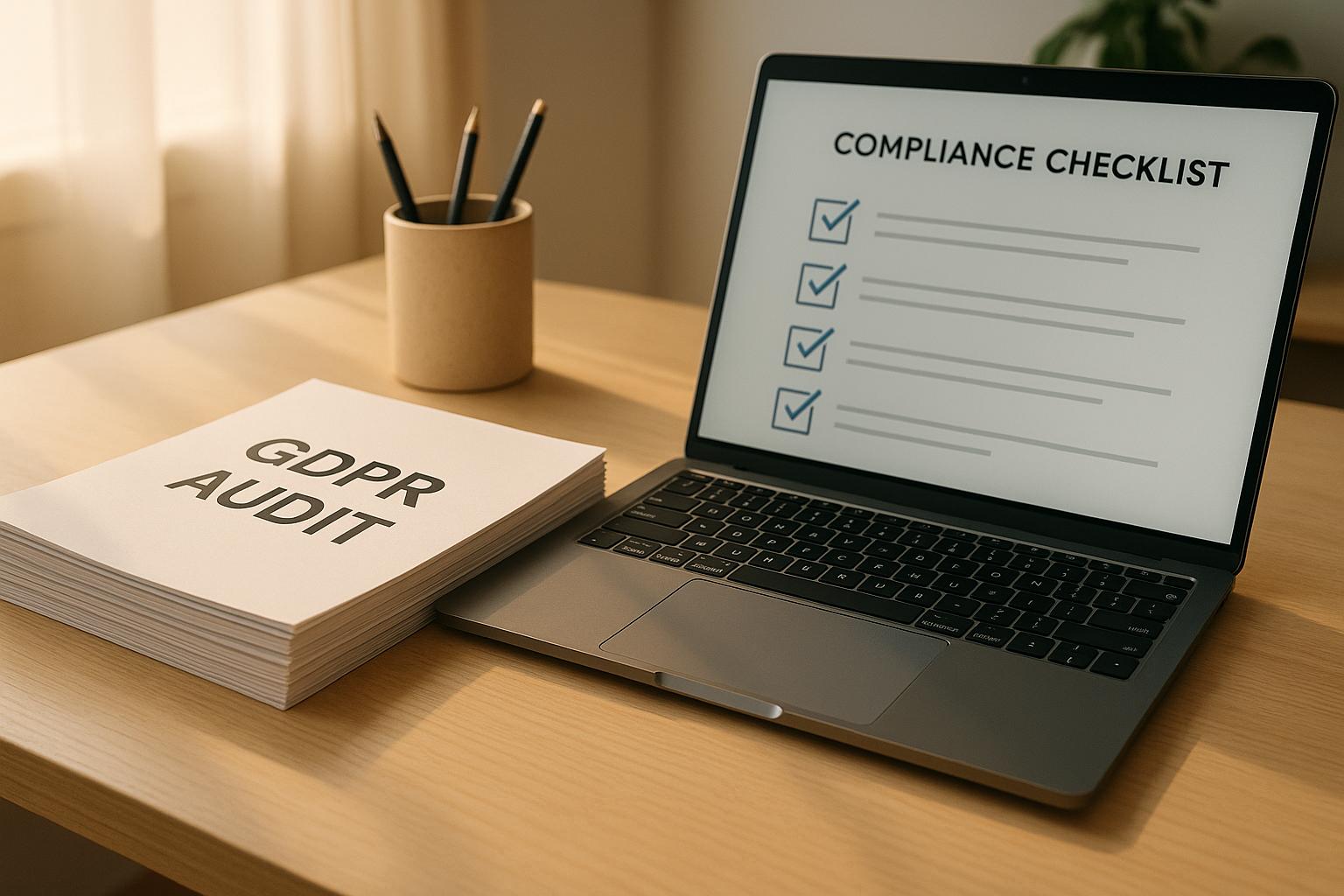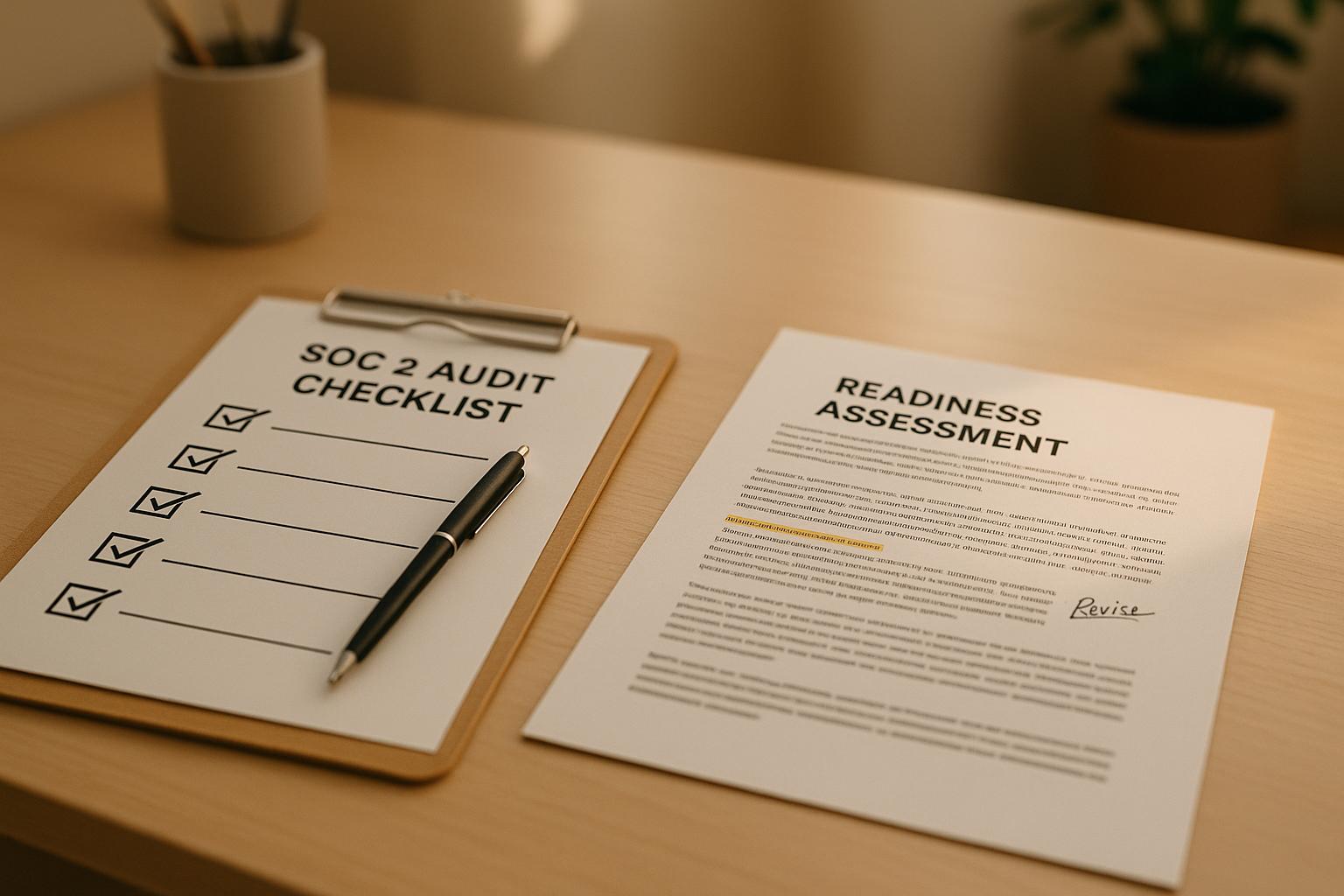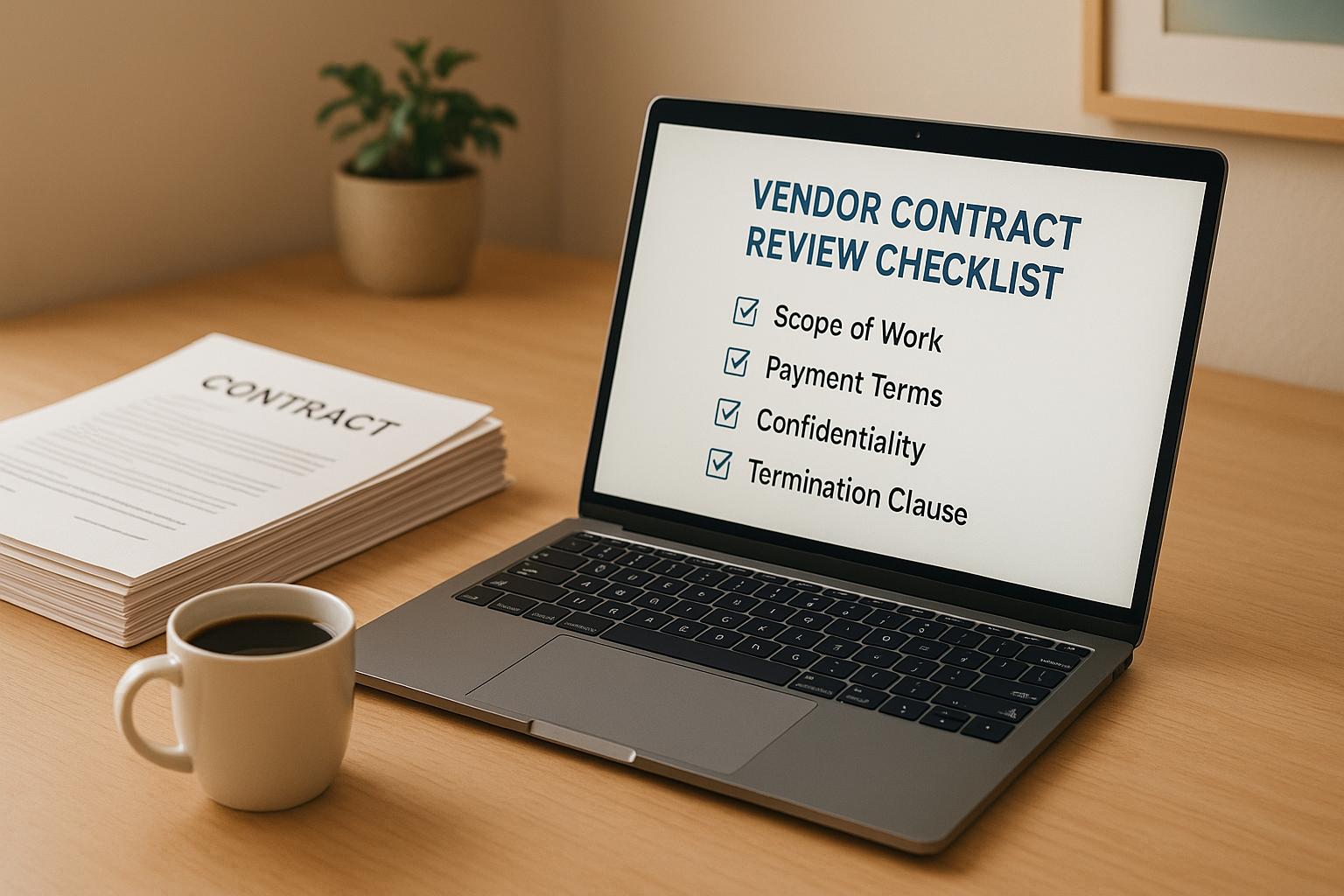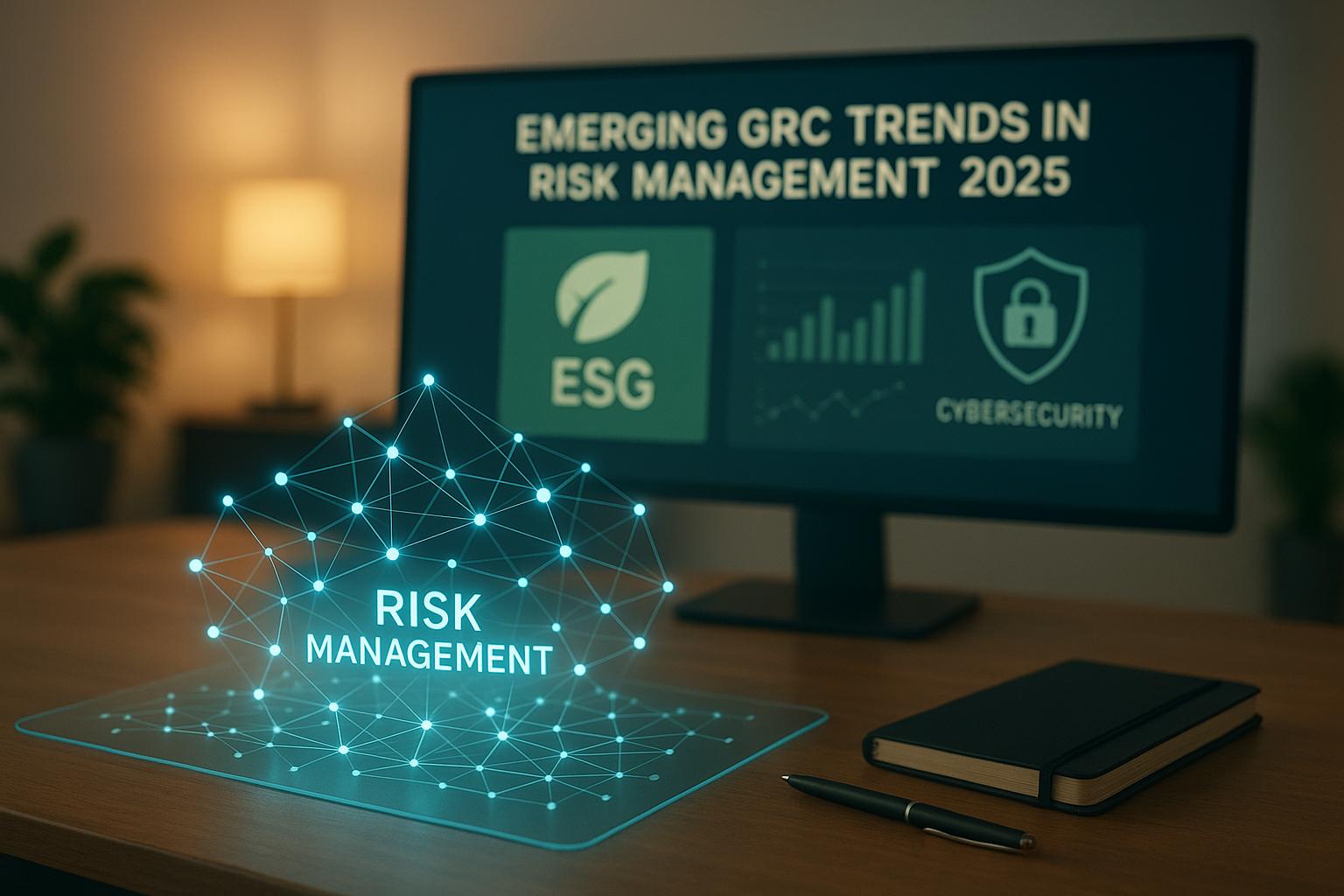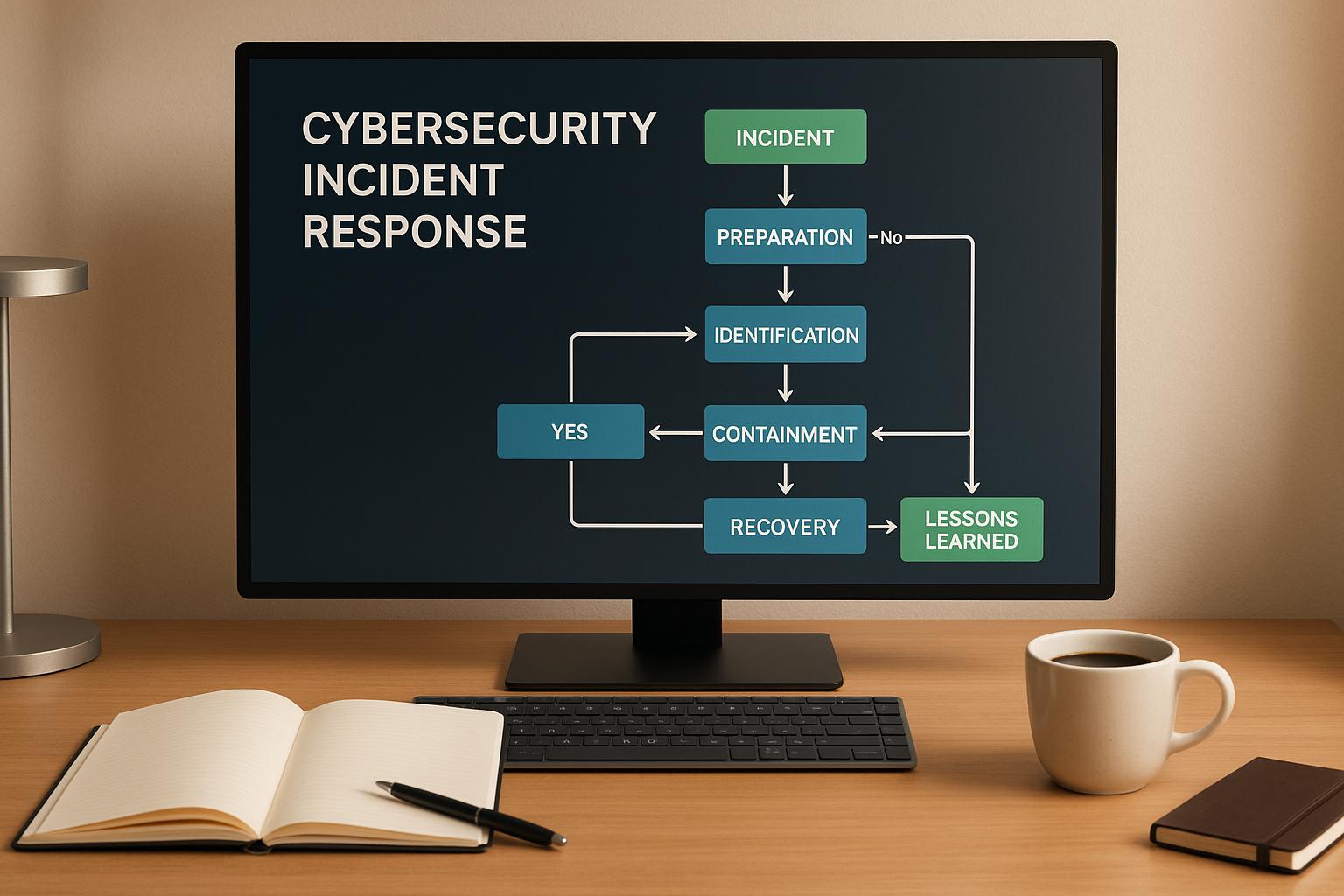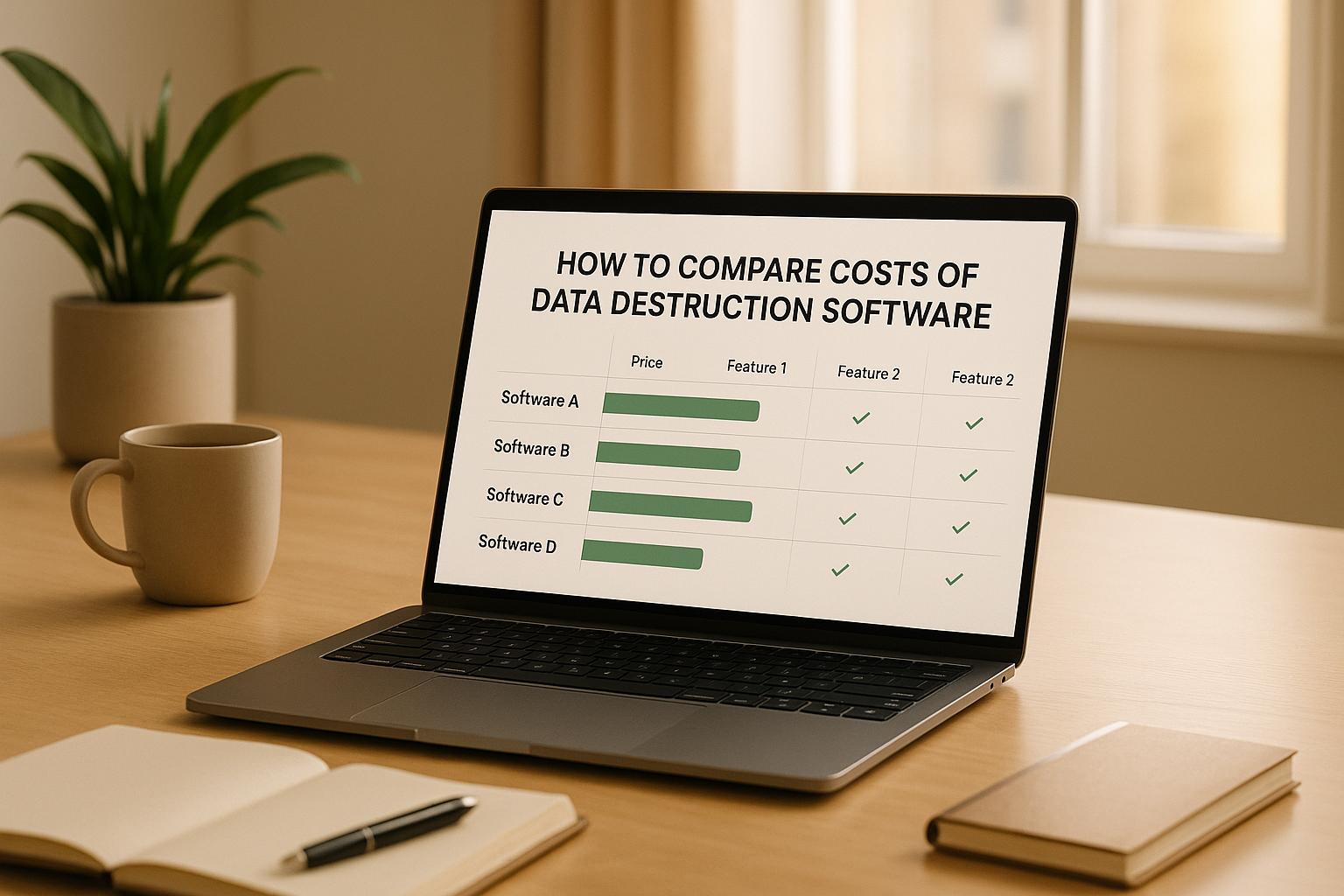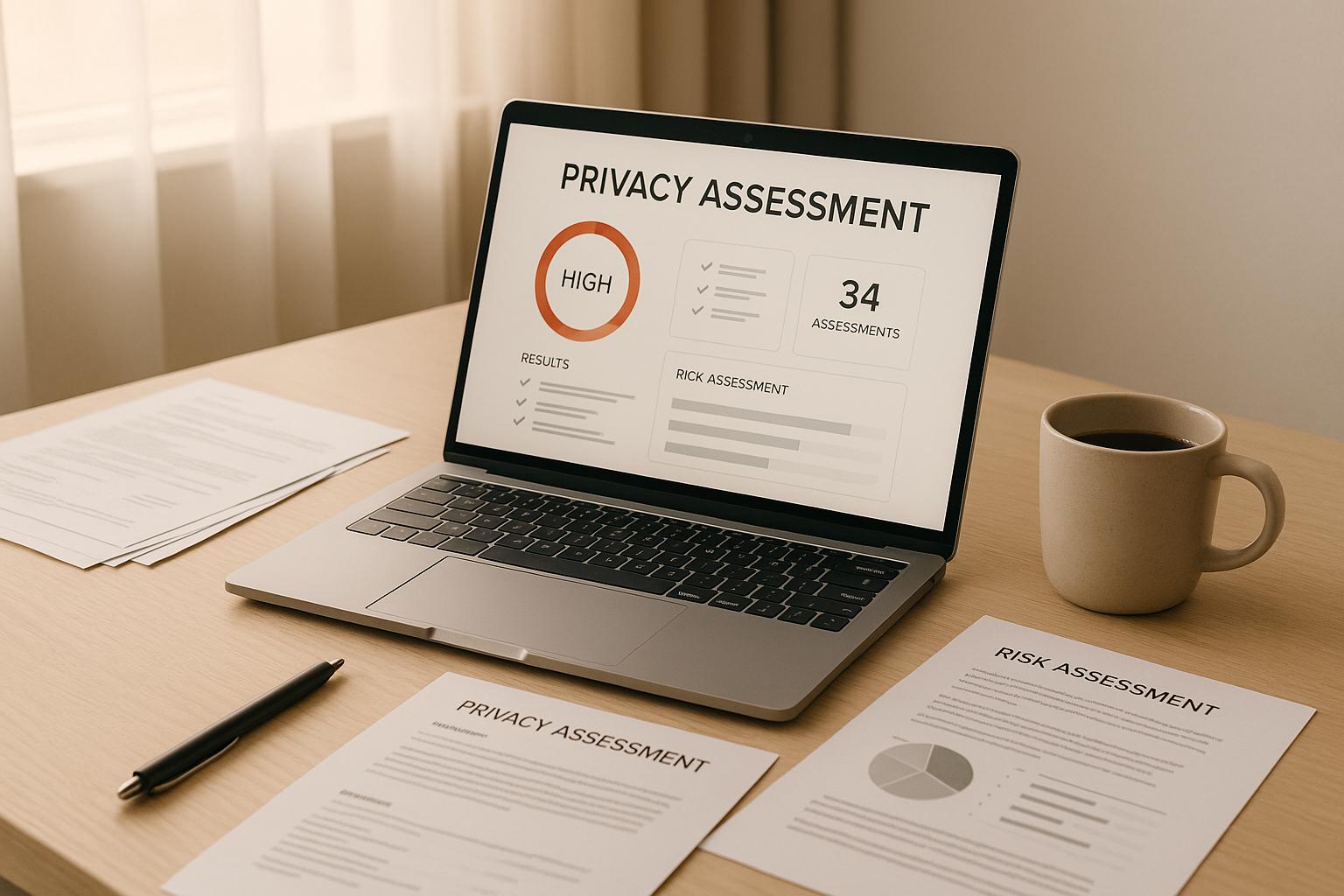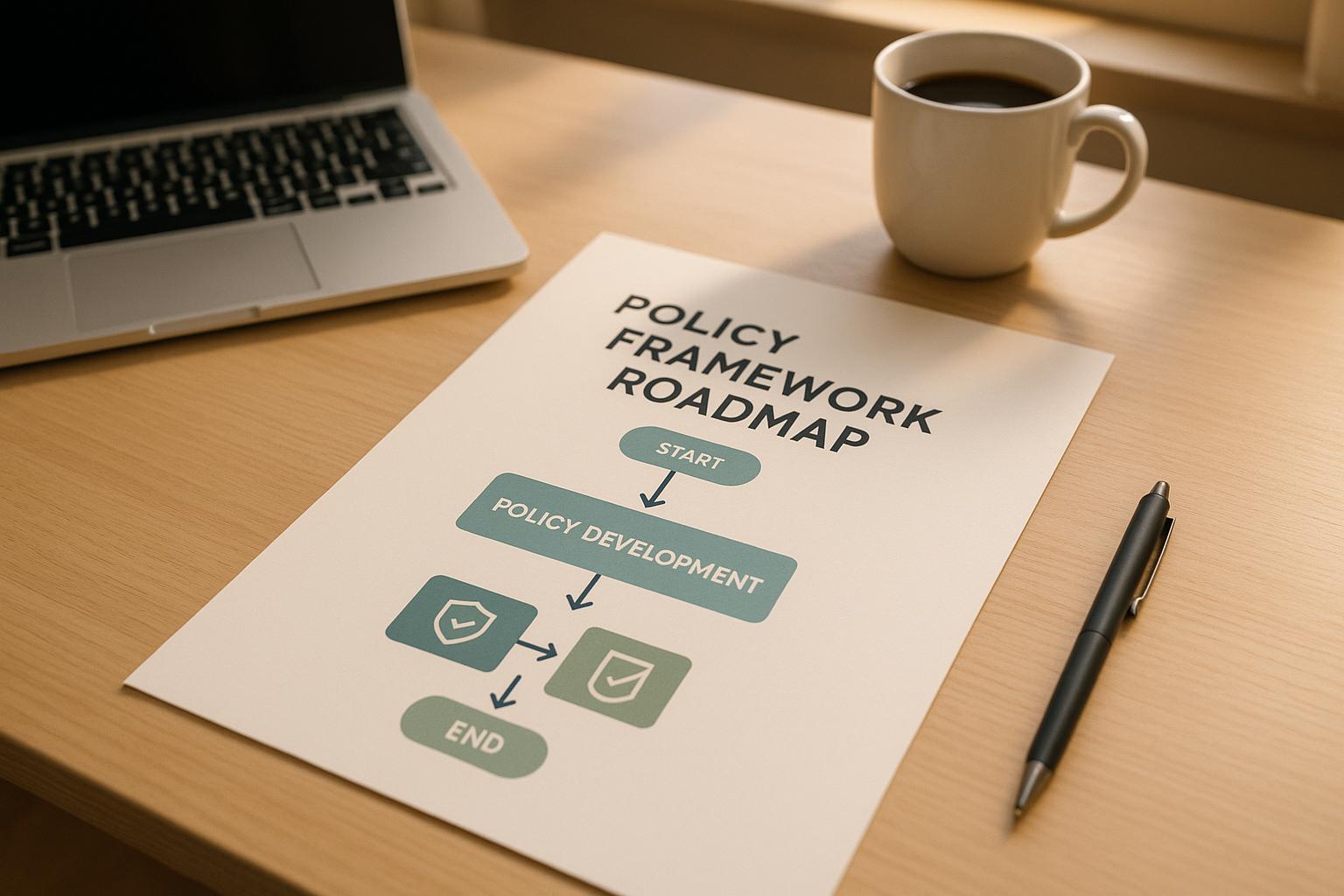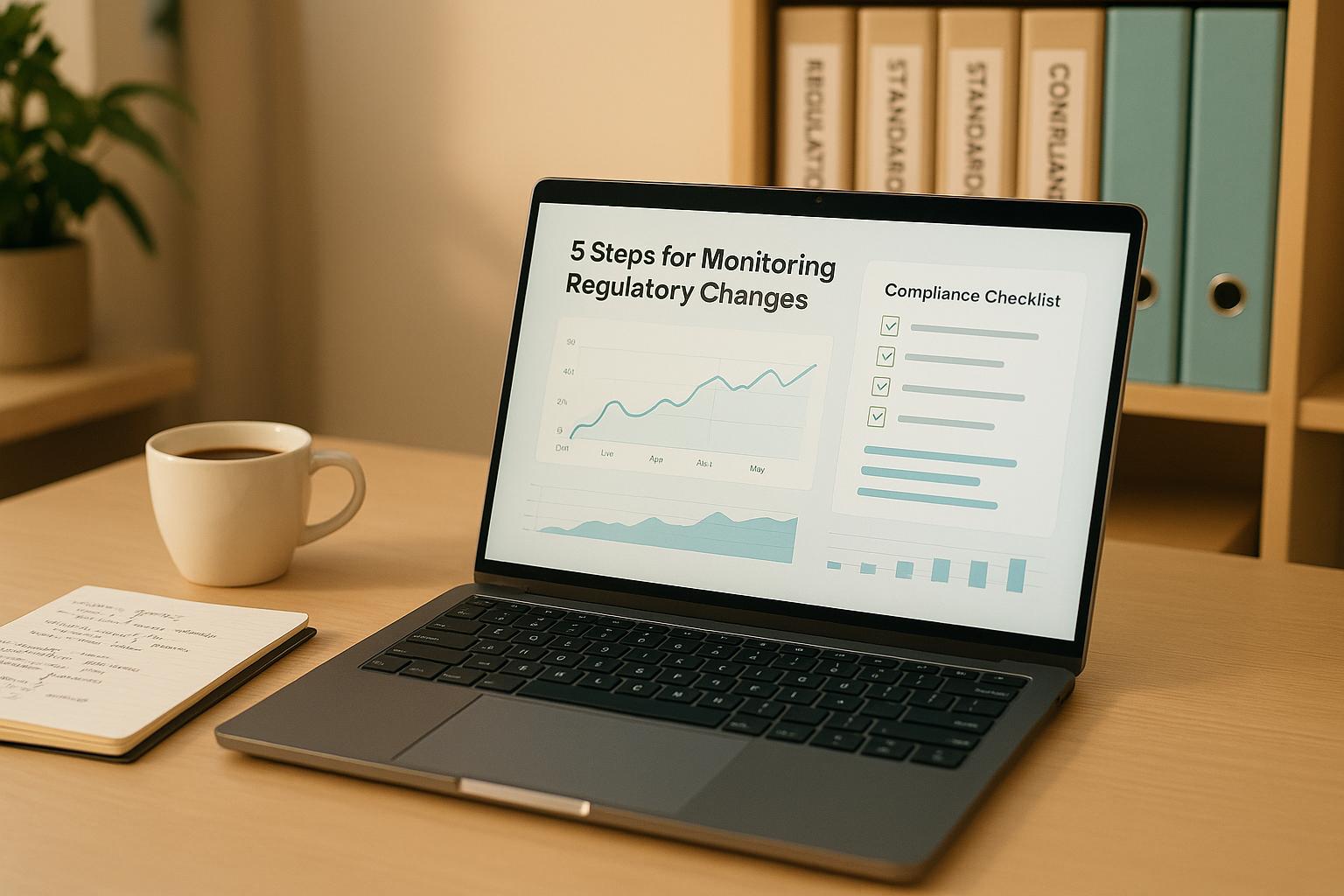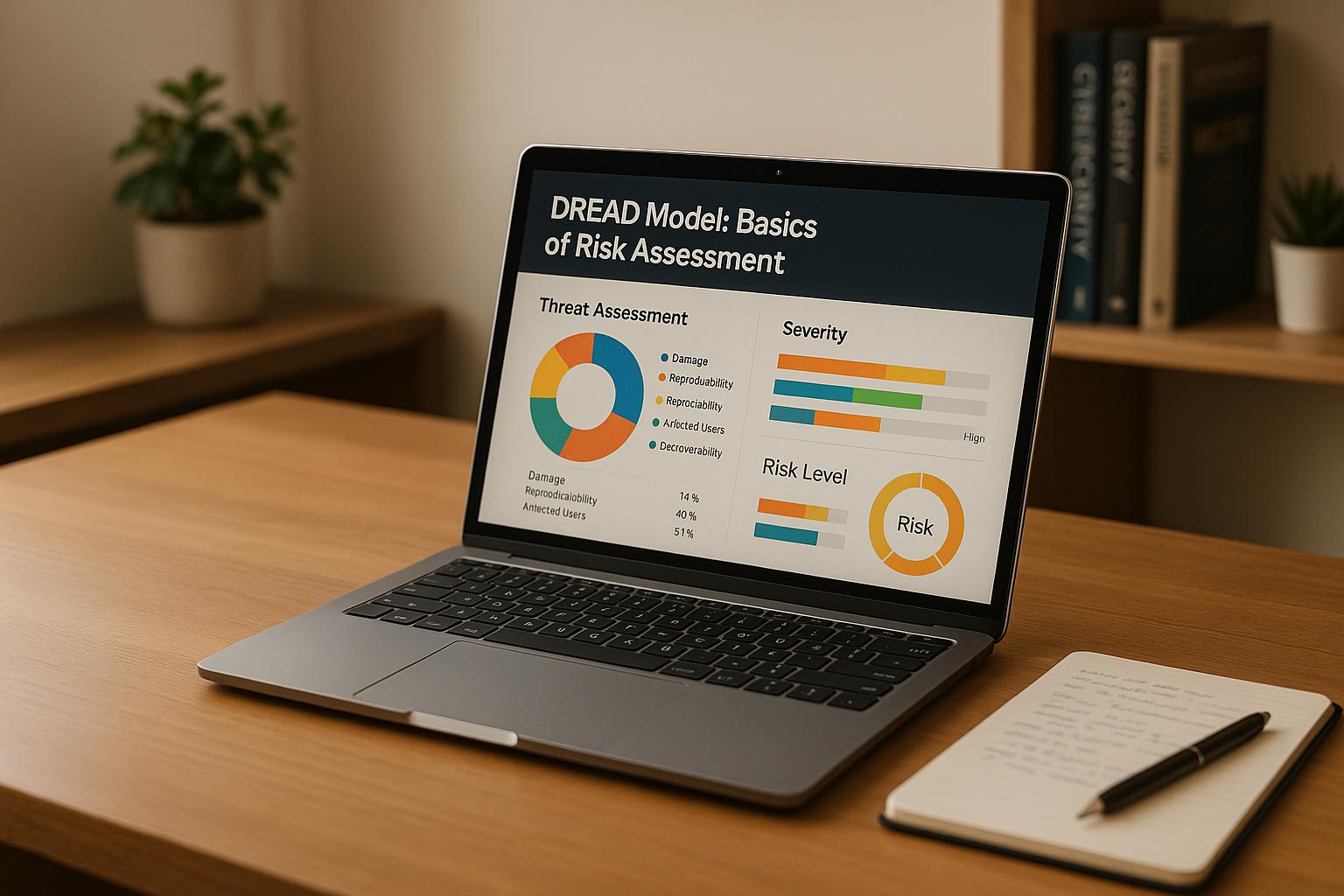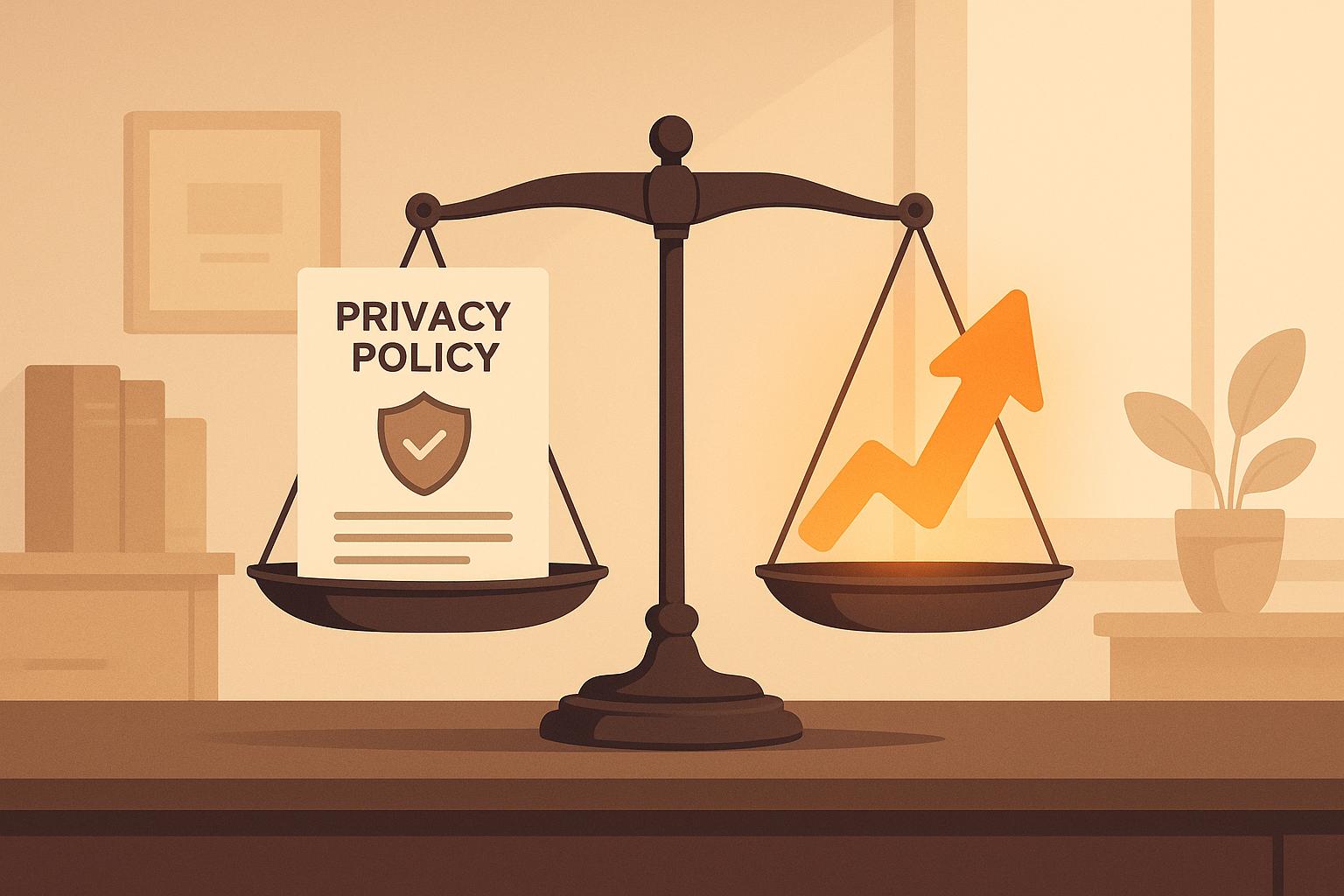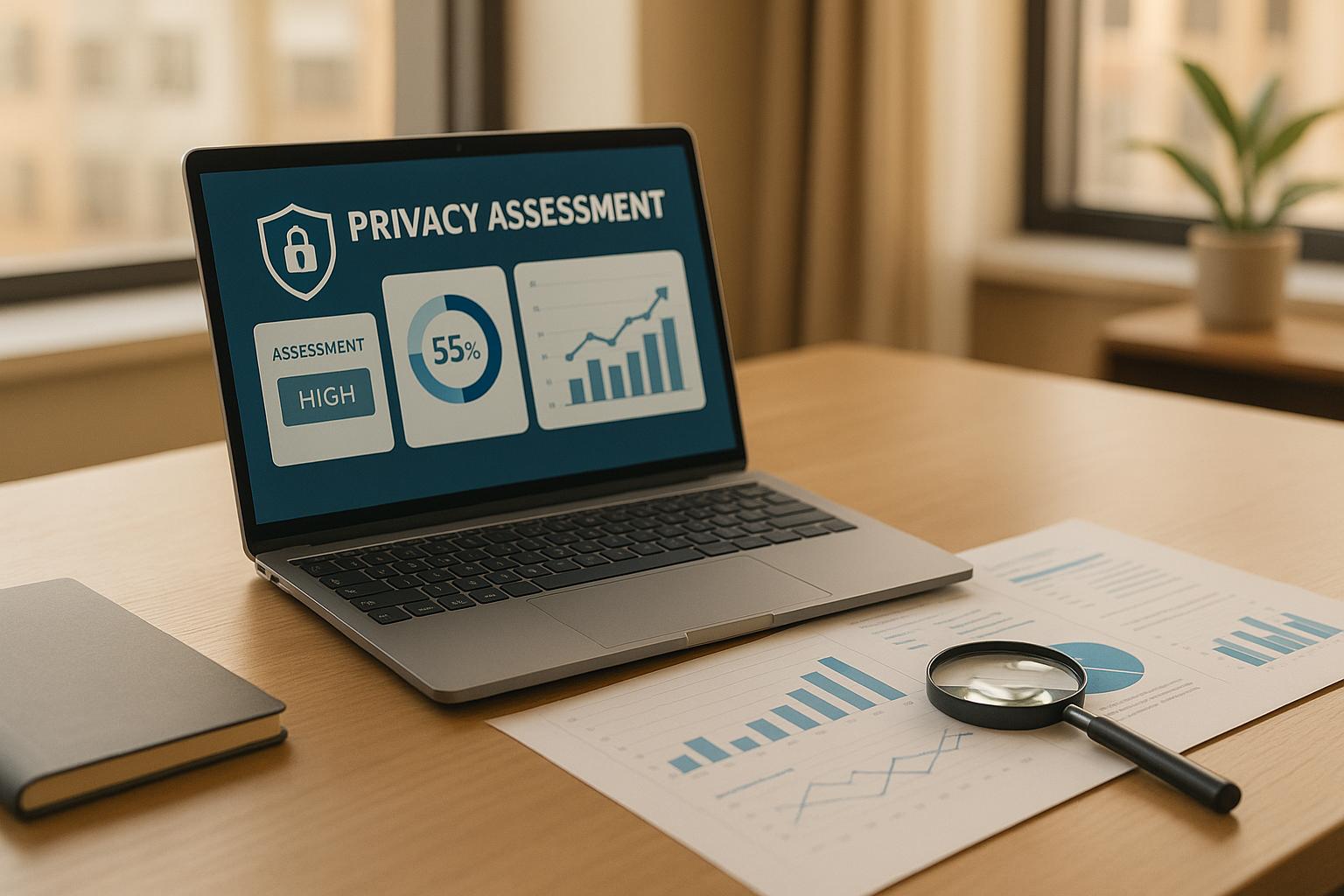
Want to protect personal data and avoid costly privacy risks? A Privacy Impact Assessment (PIA) is your go-to tool. It helps organizations identify, manage, and fix privacy risks in how they handle personal information. Here’s what you need to know:
- What is a PIA? A structured process to evaluate how you collect, use, and manage personal data, ensuring compliance with laws like GDPR, HIPAA, or the E-Government Act.
- Why it matters: 75% of consumers won’t trust businesses that don’t protect their data. Plus, non-compliance can lead to hefty fines (up to €20 million under GDPR).
- Key steps:
- Plan: Define your scope, goals, and involve the right stakeholders.
- Map Data: Create an inventory of personal data and track its flow.
- Identify Risks: Spot vulnerabilities like cyber threats or weak access controls.
- Mitigate Risks: Use encryption, access controls, and training to address issues.
- Report & Monitor: Document findings, get leadership approval, and update regularly.
Quick Tip: Use tools like data flow charts and automated solutions to streamline the process. Outsourcing to experts (like Virtual DPO services) can simplify compliance and save time.
Bottom Line: PIAs aren’t just about compliance - they build trust and protect your organization from data breaches. Ready to start? Keep reading for detailed steps.
Data Protection Impact Assessment: A Guide to Conducting Privacy Risk Assessments.#dpia #PRA #GDPR
Planning Your PIA
Laying the groundwork for a Privacy Impact Assessment (PIA) is all about preparation. A clear scope and the right participants ensure that no critical privacy risks are overlooked. Start by defining the scope of your assessment and identifying the key players who will guide the process.
Setting Scope and Goals
The first step in planning your PIA is defining its scope and objectives. This determines which data processing activities you’ll review and what you aim to achieve.
Begin by drafting a concise project description that explains the purpose and context of the PIA to stakeholders. Think of this as your guidepost throughout the entire process.
Your scope should cover every stage of the data lifecycle, from collection to disposal. Privacy risks can pop up at any point, so it’s essential to take a comprehensive approach.
"Scoping a Privacy Impact Assessment (PIA) project requires a detailed understanding of the project's data processing activities and their potential impact on privacy. Start by identifying the type of personal data involved, its collection, use, storage, and deletion processes." – Ashik Meeran, Data Protection Officer
Create a list of the types of personal data involved, from basic identifiers to sensitive information, and note their corresponding privacy risks. Different data categories often come with varying legal and regulatory requirements.
Document why you’re collecting this data, ensuring your reasons align with regulations like GDPR. This step not only helps with compliance but also clarifies your objectives for the team.
Set specific, actionable goals for your PIA. Are you focusing on regulatory compliance, preparing for a product launch, or addressing privacy concerns? Establishing clear priorities keeps the process on track and ensures your team works toward the same outcomes.
A well-defined scope allows you to pinpoint potential privacy risks early and create tailored strategies to address them. By understanding exactly what data you’re handling and why, you’ll be better equipped to uncover vulnerabilities and protect sensitive information.
Once your scope is clear, it’s time to bring the right stakeholders into the fold.
Getting Key Stakeholders Involved
A successful PIA depends on collaboration. Identifying the right team members ensures that all privacy risks are thoroughly examined.
Internal stakeholders often include project owners, Data Protection Officers (DPOs), IT and security teams, legal and compliance experts, HR, and relevant business units. Each group offers a unique perspective on how data flows within your organization.
On the other hand, external stakeholders might include data subjects, customers, regulatory authorities, third-party vendors, and industry organizations. These groups can provide valuable insights into privacy expectations and compliance requirements that you might otherwise overlook.
To keep things organized, create a stakeholder register with contact details, roles, and responsibilities for everyone involved. This document will serve as your go-to resource for coordinating efforts throughout the PIA.
Develop a communication plan to keep stakeholders engaged at every stage of the assessment. Early conversations can help you identify potential issues before they escalate. Regular updates ensure everyone stays aligned on the objectives and findings.
Clearly define roles and responsibilities to avoid gaps or overlaps in coverage. Your team should bring together expertise from privacy, legal, IT, and business operations.
It’s also important to consider each stakeholder’s level of influence and interest in your data processing activities. High-influence stakeholders should receive frequent updates and be involved in key decisions, while others might only need periodic summaries.
Finally, align your PIA with broader business goals and gain leadership support. When executives see how privacy assessments drive business success, they’re more likely to back your efforts with the necessary resources and authority.
Make sure to communicate why certain activities or conditions require a PIA. Establishing this clarity helps your organization adopt consistent privacy practices across different projects and departments.
Data Mapping and Risk Identification
Once your stakeholders are aligned and your scope is clear, it’s time to tackle the core of your Privacy Impact Assessment (PIA): identifying the personal data you handle and pinpointing where privacy risks may lurk. Data mapping provides a thorough view of your data landscape, helping to uncover vulnerabilities that could lead to data breaches or regulatory penalties. This step lays the groundwork for a robust risk assessment.
Data mapping involves creating a detailed inventory of personal data to understand its scope and address risks head-on. With this clear view, you can proactively mitigate privacy concerns.
The challenge? Many organizations lack this clarity. In fact, only 34% of businesses have conducted data mapping and fully understand their data practices. This knowledge gap leaves them exposed to compliance issues and potential privacy incidents.
By mapping your data, you can identify every entry point, track data flows, and uncover areas at risk of compromise. This process also highlights third-party relationships and their associated risks while revealing interdependencies that show how changes in one area could impact privacy elsewhere.
This effort ultimately forms the foundation for a systematic personal data inventory.
Creating a Personal Data Inventory
Building a personal data inventory is a systematic process that touches every corner of your organization. It serves as a cornerstone for identifying privacy risks and meeting regulations like GDPR and CCPA.
Start by cataloging all systems, databases, and repositories that store personal information. This includes everything from cloud storage and apps to file servers and even paper records.
Next, break down the specific data elements within each system. Identify the types of data stored and categorize them based on sensitivity and regulatory requirements. It’s essential to distinguish personal data from non-personal data and define the categories of personal data your organization handles.
Common categories include:
- Personally Identifiable Information (PII)
- Biographical and contact details
- Financial and health data
- Employment records
- Geolocation and web tracking data
- Social media activity
- Consent and preference information
Each category comes with its own privacy risks and regulatory obligations.
Collect metadata for each data asset, such as data sources, categories, owners, subjects, purposes, and retention periods. Understanding why you collect certain data is crucial for compliance and risk analysis.
For example, Coop Alleanza 3.0, a European retailer with 2.7 million members, used Informatica IDMC’s data mapping service to integrate customer, product, and sales data while safeguarding customer PII to meet GDPR requirements. This approach allowed them to stay compliant while leveraging their data for business insights.
Document everything - data assets, sources, processing activities, consents, and retention policies. This documentation is critical for regulatory audits or privacy investigations.
Ask yourself these key questions as you build your inventory:
- How is personal data currently managed in your organization?
- Who owns the data, and who is responsible for maintaining it?
- How will you keep the inventory up to date?
Engage data owners and subject matter experts throughout the process. Use interviews, surveys, and automated tools to gather comprehensive information. Different departments often have unique insights into how data flows through their processes.
Data mapping can also reveal areas where data is stored indefinitely or where disposal mechanisms are missing. These discoveries often point to significant privacy risks that need immediate attention.
With a complete inventory in place, the next step is understanding how data moves within your organization.
Tracking Data Movement
As personal data flows between systems, departments, and third-party vendors, privacy risks increase. Mapping these movements is essential for identifying vulnerabilities and maintaining compliance.
Data flow mapping provides a bird’s-eye view of your system architecture, offering insights into process security. This includes both internal transfers between departments and external transfers to vendors or cloud services.
Start by identifying all entities with access to personal data. Consider internal and external transfers, local and cloud-based servers, and third-party access points. Each point of contact represents a potential risk that needs to be assessed and secured.
Pay special attention to third-party relationships and data-sharing arrangements. Many breaches occur through vendors where data protection responsibilities aren’t clearly defined. Your mapping should document all external parties processing personal data on your behalf and the safeguards in place.
"It is quite difficult, for example, to prepare a privacy statement or an internal privacy policy without understanding what data is collected, how it is processed, and with whom it is shared." – Rita Heimes, General Counsel and Chief Privacy Officer for the IAPP
Develop visual data flow maps to simplify communication with stakeholders. Start with a context diagram and expand it to the necessary level of detail. Visual representations make it easier to identify risks and explain findings to leadership.
Collaboration is key - bring in stakeholders from legal, compliance, IT, HR, marketing, and other departments. Each team offers unique perspectives on how data moves through their workflows and potential privacy risks.
Implement clear policies for data access and sharing based on your mapping insights. Regularly review access permissions and provide training to ensure employees understand their roles in protecting data.
Automated tools can help streamline this process, reducing manual errors and speeding up risk detection. Look for tools that provide deep contextual insights into where your data resides.
Keep your data flow maps updated as your systems and processes evolve. Regular updates ensure your privacy protections stay aligned with changes in your operations and technology.
For instance, the Maryland Online Data Privacy Act (MODPA), effective October 1, 2025, requires data mapping and privacy impact assessments for activities posing heightened risks to consumers. This trend underscores the growing importance of thorough data mapping for staying compliant.
Risk Assessment and Mitigation
Once your data is mapped and your workflows documented, it’s time to tackle the heart of your Privacy Impact Assessment: identifying privacy risks and taking steps to address them. This is where your data inventory transforms into actionable strategies that safeguard both your organization and the individuals whose data you handle.
The process of assessing risks requires a sharp analytical approach and input from key stakeholders. You’ll need to scrutinize every stage of your data lifecycle - from collection to disposal - while keeping an eye on both current threats and potential vulnerabilities.
Finding and Analyzing Privacy Risks
The first step in managing privacy risks is to carefully examine your data flows and processing activities. This helps you pinpoint areas where unauthorized access, misuse, or breaches could occur. A combination of quantitative methods (like analyzing metrics) and qualitative assessments (like expert opinions) ensures a thorough evaluation.
Visual tools such as flowcharts or diagrams can be particularly helpful. They allow you to map out data movement clearly, making it easier to identify weak points that might not stand out in written documentation. Categorizing data by its sensitivity can also help you prioritize which risks to address first.
When assessing vulnerabilities, consider these key threat categories:
- Cyber threats: These include external attacks, malware, ransomware, and phishing schemes aimed at stealing employee credentials.
- System failures: Issues like hardware breakdowns, software glitches, database corruption, or weak backup systems can lead to data loss or exposure.
- Access control issues: Problems such as overly broad permissions, shared login credentials, and the lack of role-based access controls can create internal risks.
It’s essential to evaluate both the likelihood of each risk and the potential impact it could have. Engaging stakeholders from various departments - like IT, HR, and customer service - can bring valuable perspectives to the table. Document each risk in detail, including how it might occur, which data it could affect, and the possible consequences. This documentation will serve as the foundation for your mitigation strategy.
Creating Risk Mitigation Plans
Mitigating risks effectively requires a mix of technical solutions and organizational policies.
On the technical side, consider these strategies:
- Encrypt data at all stages - whether it’s being transmitted or stored - to ensure that even if accessed, it remains secure.
- Strengthen access controls by limiting data access based on job roles and business needs.
- Perform regular security audits to uncover and address new vulnerabilities.
These measures form a strong technical backbone, but they’re only part of the solution.
Administrative controls are equally critical. Develop clear policies for data handling, including acceptable use, retention timelines, and disposal procedures. Establish incident response plans to manage breaches efficiently, ensuring timely notifications and containment actions.
Physical security also plays a role. Protect sensitive areas like server rooms and filing cabinets with locks and restricted access.
Tailor your solutions to the specific risks you’ve identified. For example, if employees are using weak passwords, implement multi-factor authentication and robust password policies. If third-party data sharing is a concern, conduct thorough vendor assessments and review contracts carefully.
Employee training is another cornerstone of risk mitigation. Educate your team on best practices for data security and their responsibilities in safeguarding privacy. Open communication ensures everyone understands their role in carrying out the mitigation plan.
Finally, create an actionable implementation plan with clear steps, timelines, and assigned responsibilities. Balance immediate fixes - like patching known vulnerabilities - with longer-term improvements, such as process upgrades or new technology adoption. Regular reviews and monitoring will help you stay ahead of emerging risks and fine-tune your strategies.
If your organization lacks in-house privacy expertise, consider partnering with specialists. Services like Cycore Secure’s Virtual Data Protection Officer (vDPO) can provide expert guidance, helping you navigate complex privacy regulations and implement practical, compliant risk mitigation strategies.
sbb-itb-ec1727d
Creating Your PIA Report
A PIA report is a cornerstone of privacy compliance, internal audits, and effective privacy management. It consolidates your analysis into a structured document that stakeholders can rely on for informed decision-making.
Start by providing a clear project overview. Describe the purpose, scope, and key stakeholders involved. This introduction sets the stage for the rest of the report. The next crucial element is your data flow analysis, which maps out how personal information moves through your systems. Include details about the types of data you collect, its sources, how it’s processed, who accesses it, and where it ultimately ends up.
In the privacy risks section, outline each identified risk, along with its likelihood and potential impact. Go beyond simply listing risks - explain them thoroughly so readers understand the actual threats. Highlight both technical vulnerabilities and procedural weaknesses that could lead to privacy issues.
Document your existing controls and safeguards to show what measures are already in place to protect data. This not only demonstrates progress but also helps pinpoint areas that need improvement. Be transparent about any gaps in your current setup, as these will guide your mitigation strategies.
Your mitigation strategies should directly address the risks you’ve identified. Detail specific actions, such as implementing technical solutions, updating policies, or introducing staff training programs. Include timelines for each step and assign responsibilities to ensure accountability. These plans should be practical and aligned with your organization’s resources.
Incorporate data minimization plans to show how you’ll limit the collection and retention of personal information. This reinforces privacy-by-design principles and reduces overall risk exposure.
Obtain formal leadership approval for your PIA report. Senior management’s review and sign-off validate your findings and recommendations, while also committing the organization to regular updates of the report. This approval underscores the importance of privacy as a shared responsibility.
To keep your PIA report relevant, treat it as a living document. Schedule regular reviews to update data maps, controls, and risk assessments as your systems and processes evolve. Additionally, establish monitoring and review processes to evaluate the effectiveness of your mitigation strategies. Use clear metrics to track progress and adjust plans as needed.
For organizations without in-house privacy expertise, creating a comprehensive PIA report can feel daunting. Cycore Secure’s Virtual Data Protection Officer (vDPO) services offer expert guidance to ensure your report meets regulatory standards and remains actionable over time.
Ultimately, your PIA report serves as a vital resource for future privacy assessments, regulatory reviews, and internal audits. Make it thorough and actionable - it’s a key investment in safeguarding your organization’s privacy and managing long-term risks effectively.
Monitoring and Updates
Once you've implemented risk mitigation and reporting measures, the next step is to ensure your Privacy Impact Assessment (PIA) stays effective over time. A PIA isn’t something you complete once and forget; it’s an ongoing effort. As your organization’s data practices, technologies, and regulations evolve, what once seemed like a minor data collection practice could turn into a compliance risk. Regular monitoring helps you keep up with these changes and avoid gaps in compliance. To stay ahead, it’s essential to have a structured process in place to track and address updates promptly.
Setting Up Monitoring Processes
A solid monitoring framework allows you to spot changes before they escalate into compliance issues. Significant changes to how you process data should trigger an immediate PIA update. For instance, privacy compliance standards define a major change as one that alters the privacy risks tied to your IT systems. A practical example? If your organization starts collecting social security numbers for a system that didn’t previously require them, this would qualify as a major change and demand an updated PIA.
While immediate updates are critical for big changes, smaller shifts can also add up over time. That’s why regular review schedules are equally important. During these reviews, assess whether there have been any changes to the nature, scope, context, or purpose of your data processing activities.
Involve the same key stakeholders from your original PIA in your monitoring efforts. This typically includes your Data Protection Officer (DPO), legal advisors, and information security team. Engaging these stakeholders ensures a thorough review process and strengthens the overall effectiveness of your monitoring strategy.
Don’t forget to document everything. Keeping detailed records of issues and solutions - except for data protected by non-disclosure agreements - can provide valuable insights for future assessments. Performance metrics are another useful tool. By tracking indicators like the number of privacy incidents, detection times for changes in data processing, or audit results, you can measure how well your PIA is working and refine your monitoring approach as needed.
Lastly, when updates are necessary, integrate the revised PIA into your project plans. This ensures privacy concerns remain part of your daily operations rather than being treated as separate compliance tasks. These ongoing efforts set the stage for effective collaboration with external experts when needed.
Using Outsourced Expertise
If internal resources are stretched thin, bringing in external experts can be a game-changer. Many organizations lack the bandwidth or specialized knowledge to maintain a robust PIA monitoring program. With privacy regulations becoming increasingly complex, outsourcing can provide the expertise needed to stay compliant.
Virtual Data Protection Officer (vDPO) services offer a practical solution. These services provide ongoing regulatory monitoring, assess new data processing activities, and guide PIA updates without the need for full-time in-house staff. For example, Cycore Secure’s vDPO services specialize in keeping PIAs up to date by tracking regulatory changes, assessing organizational shifts, and advising on necessary updates. This approach ensures compliance without requiring your team to constantly stay on top of every regulatory nuance.
Additionally, Governance, Risk, and Compliance (GRC) Tool Administration services can simplify the technical side of PIA monitoring. Tools like Drata, Vanta, Secureframe, and Thoropass can automate tasks such as data collection and risk assessment. However, these tools need proper setup and ongoing management to deliver value. Professional GRC administrators ensure these systems run smoothly, reducing the burden on your internal teams.
By combining expert guidance with the right technical tools, you can create a comprehensive monitoring framework. This allows your internal team to focus on core business operations while external specialists handle the complexities of privacy compliance. For many organizations, outsourcing these tasks is more cost-effective than building the same capabilities in-house, especially if you don’t have a dedicated privacy team.
Collaboration with external providers also highlights the importance of stakeholder management. Regular communication between internal teams and external experts ensures alignment and helps address your organization’s unique risks and requirements. As your organization evolves, so will the stakeholders involved in your privacy program. External providers can help identify when adjustments are needed and facilitate smooth communication across all parties.
This dynamic approach to monitoring and updates keeps your PIA relevant and effective, ensuring that privacy considerations remain a core part of your organization’s operations.
Key Takeaways
A well-structured Privacy Impact Assessment (PIA) not only ensures compliance but also builds stronger trust among stakeholders. This process involves seven interconnected phases: planning, risk analysis, risk mitigation, compiling a report, securing approval, and conducting periodic reviews. Each phase lays the groundwork for the next, creating a thorough framework for protecting privacy.
During the planning phase, organizations focus on establishing their legal authority, prioritizing high-risk programs, and involving key stakeholders from the start. The risk analysis phase takes this further by identifying vulnerabilities and categorizing risks, often using tools like data flow charts to document risks effectively. Next comes risk mitigation, where actionable plans are developed to address these vulnerabilities, followed by a detailed implementation plan that outlines the necessary steps, timelines, and assigned responsibilities.
Periodic PIAs are essential for keeping privacy risks in check, especially when introducing new systems or processes. This approach ensures that privacy remains a core element of operations rather than a one-off compliance task.
For organizations without the resources or expertise to handle PIAs in-house, outsourcing can be a practical solution. Services like Virtual Data Protection Officer (vDPO) programs offer continuous regulatory monitoring and expert guidance. For example, Cycore Secure’s vDPO services provide real-time updates and ensure compliance without the need for full-time internal staff. Outsourcing can simplify the process and help organizations stay on top of regulatory requirements.
Ultimately, effective PIAs reduce compliance risks, strengthen trust, and improve privacy safeguards. Whether handled internally or with expert help, these assessments are a cornerstone of modern data governance, emphasizing the ongoing nature of privacy management.
FAQs
What is a Privacy Impact Assessment (PIA), and how does it help build trust and ensure compliance?
What Is a Privacy Impact Assessment (PIA)?
A Privacy Impact Assessment (PIA) is a systematic approach organizations use to evaluate how they handle personal data. It examines the ways data is collected, stored, used, and protected. By identifying potential privacy risks early on, a PIA helps ensure compliance with data protection regulations like GDPR or HIPAA, while also reducing the chances of data breaches or hefty regulatory fines.
Beyond legal compliance, conducting a PIA shows a strong commitment to transparency and accountability. This can go a long way in building consumer trust. When customers know their personal information is being managed responsibly, they’re more likely to feel secure and engage with your business. In the U.S., where concerns about data privacy are growing, a PIA serves as an essential tool for earning trust and staying compliant.
What challenges do organizations face during data mapping, and how can they address them?
Organizations face a variety of hurdles when working on data mapping. One of the biggest challenges is the time and effort it takes to build a detailed and precise data map. This process can be made more efficient by conducting structured interviews with data stewards and using automation tools to simplify and speed things up.
Another issue is keeping the data map up-to-date. Since data environments are always changing, it's important to treat data mapping as an ongoing task. Regular reviews and updates can help ensure the map reflects the latest changes.
Other obstacles include handling multiple data sources and maintaining data quality. These challenges can be addressed by adopting standardized procedures, using automation whenever possible, and enforcing strong data governance practices to maintain consistency and accuracy.
When should an organization outsource their Privacy Impact Assessment, and how can Virtual Data Protection Officer (vDPO) services help?
Organizations might find it beneficial to outsource their Privacy Impact Assessment (PIA) when they don’t have the necessary expertise in-house, want to save time and resources, or need a neutral perspective to evaluate their privacy practices. This can be particularly crucial for companies managing sensitive or high-risk data processing activities.
Using Virtual Data Protection Officer (vDPO) services comes with several perks. These include access to privacy experts, cost-efficient solutions, and impartial advice. A vDPO can help businesses comply with regulations like GDPR, minimize risks, and ensure privacy requirements are properly handled. This allows organizations to concentrate on their primary operations while maintaining robust privacy safeguards.


